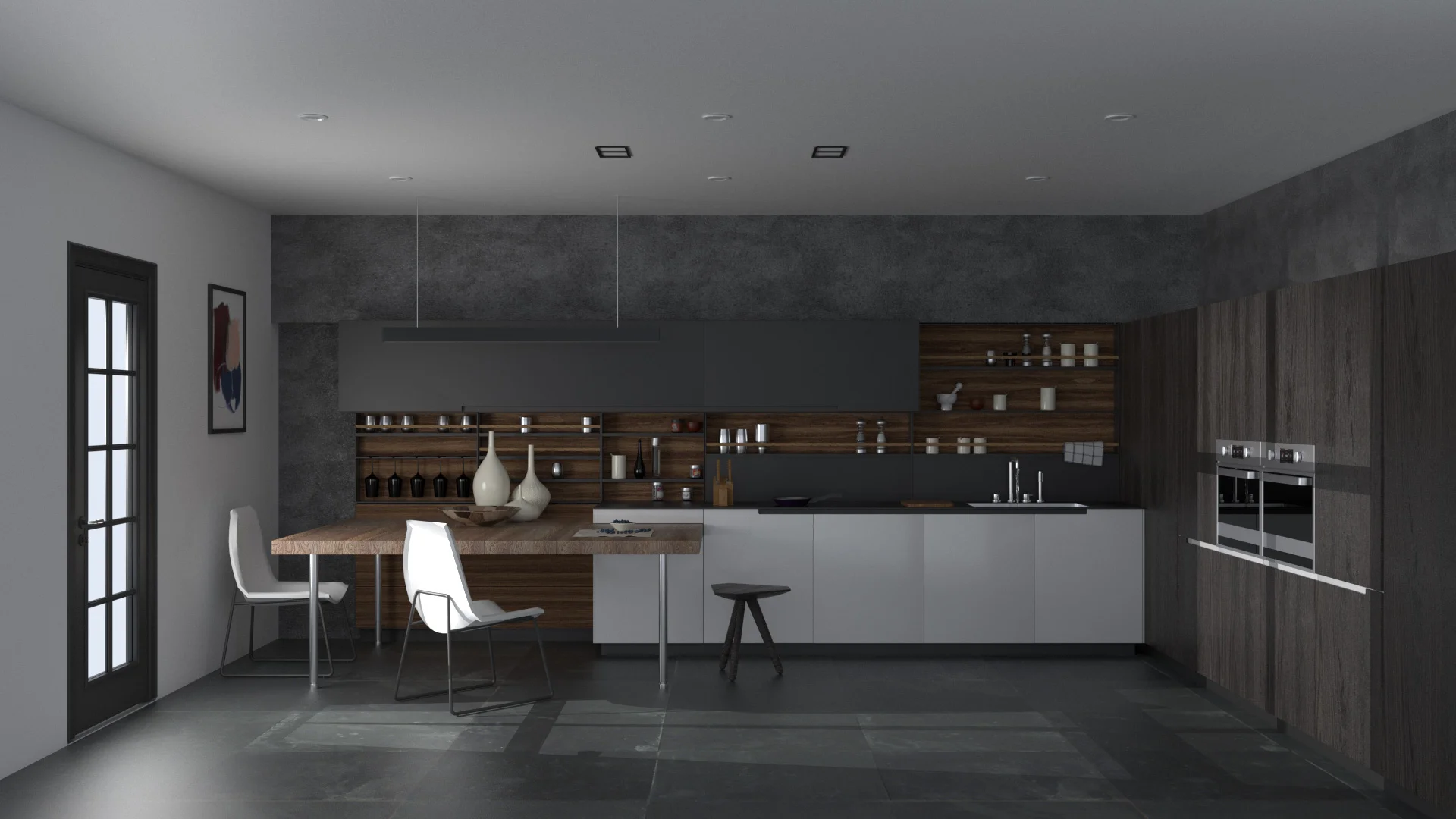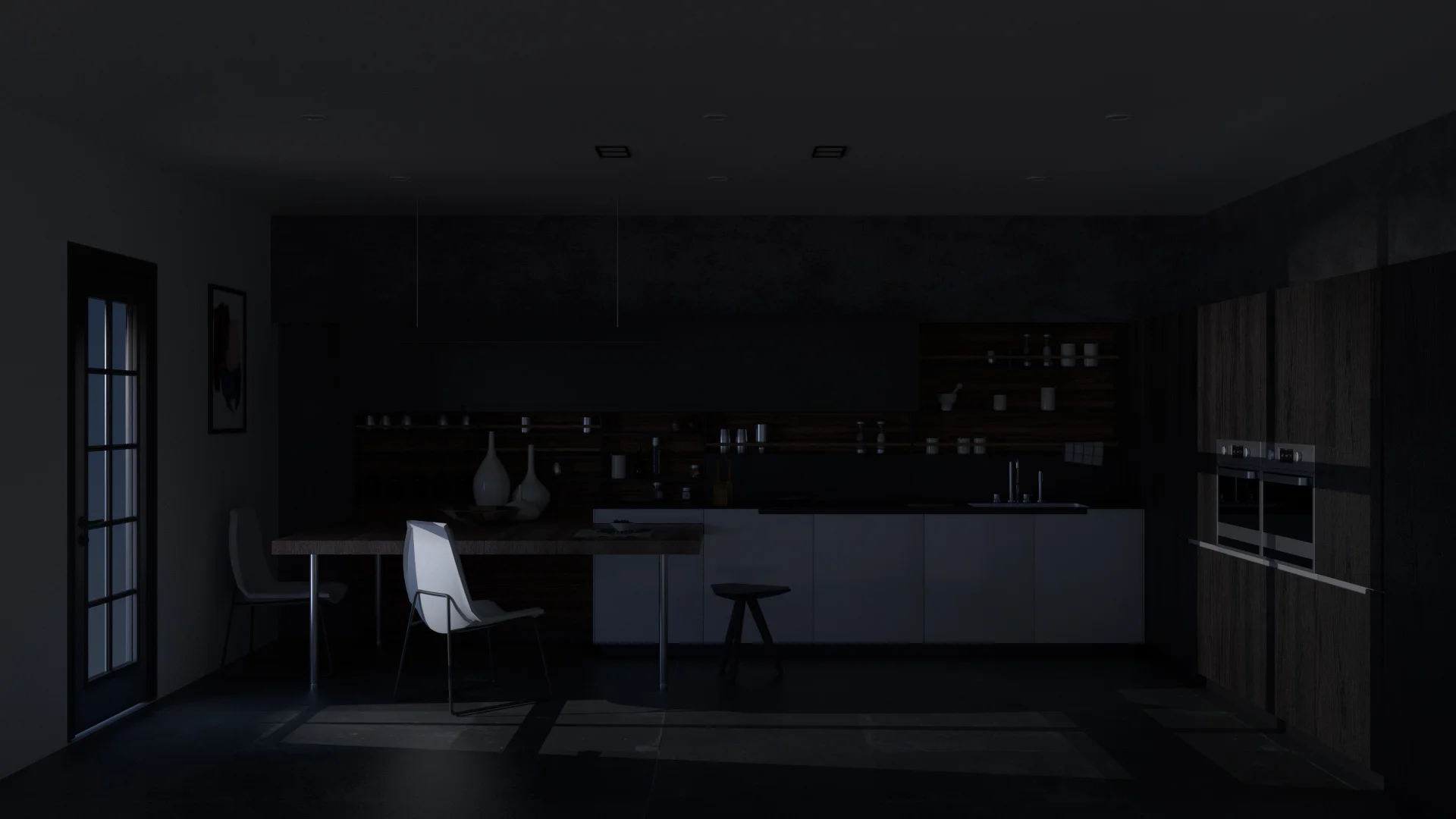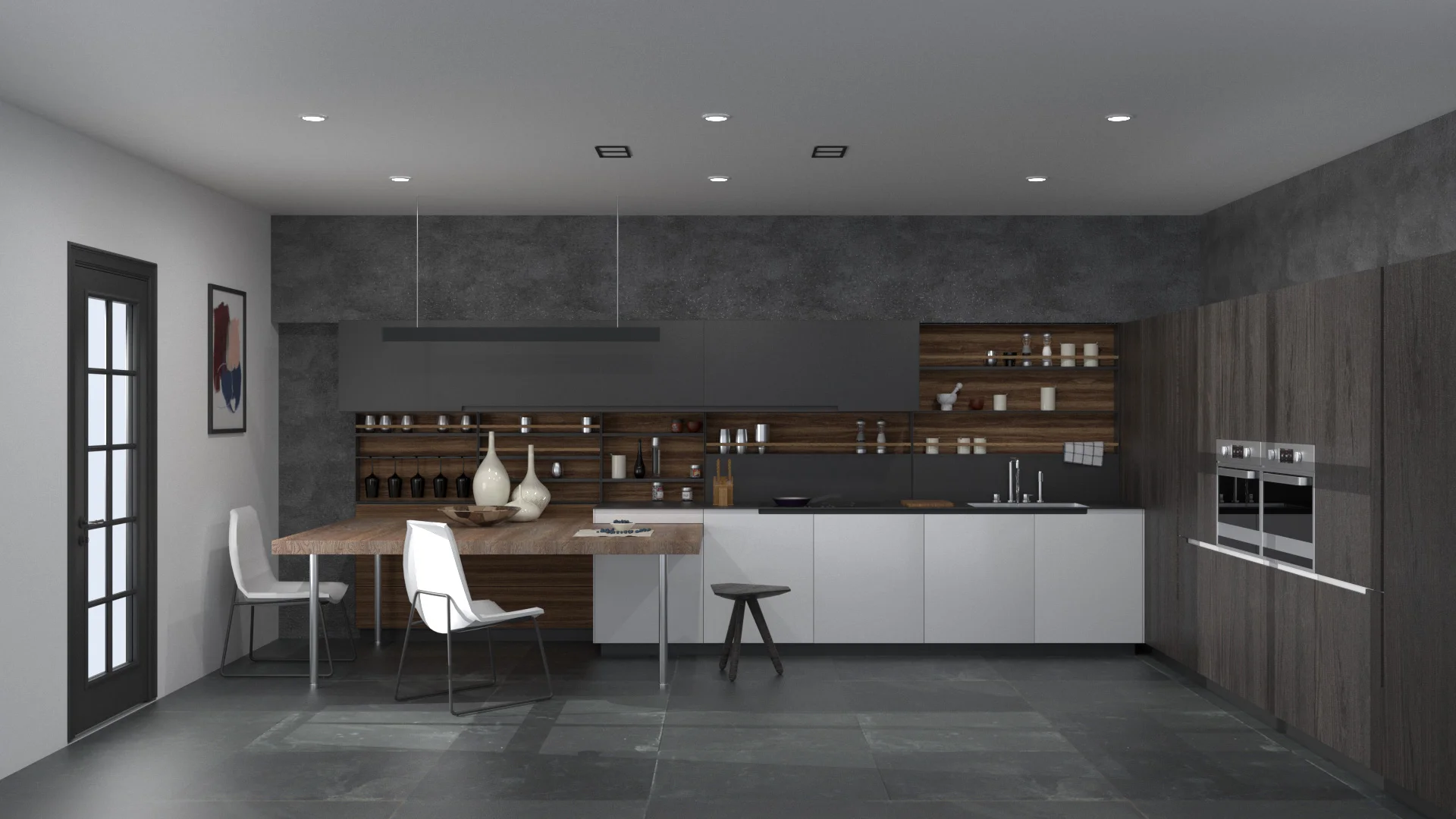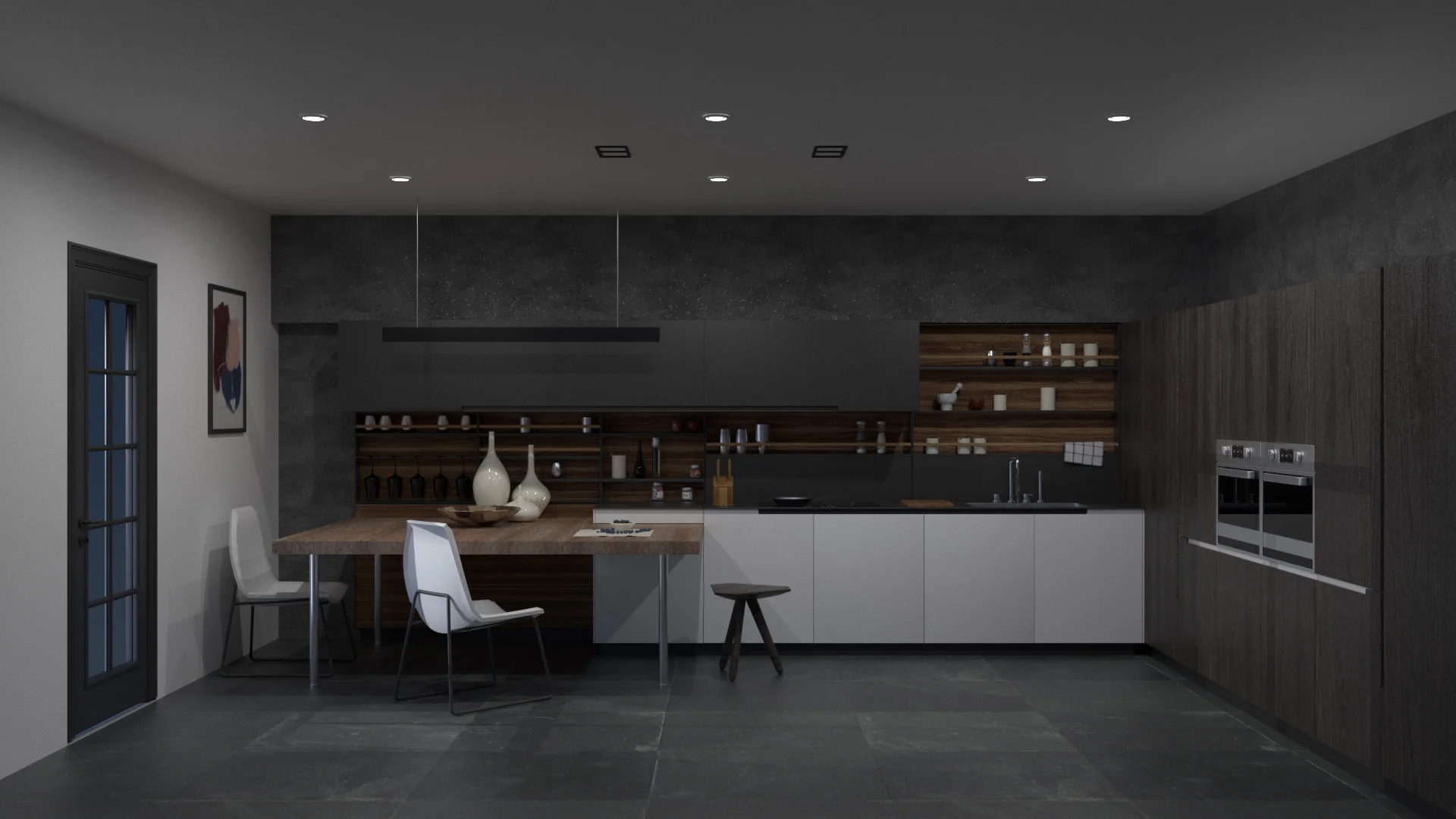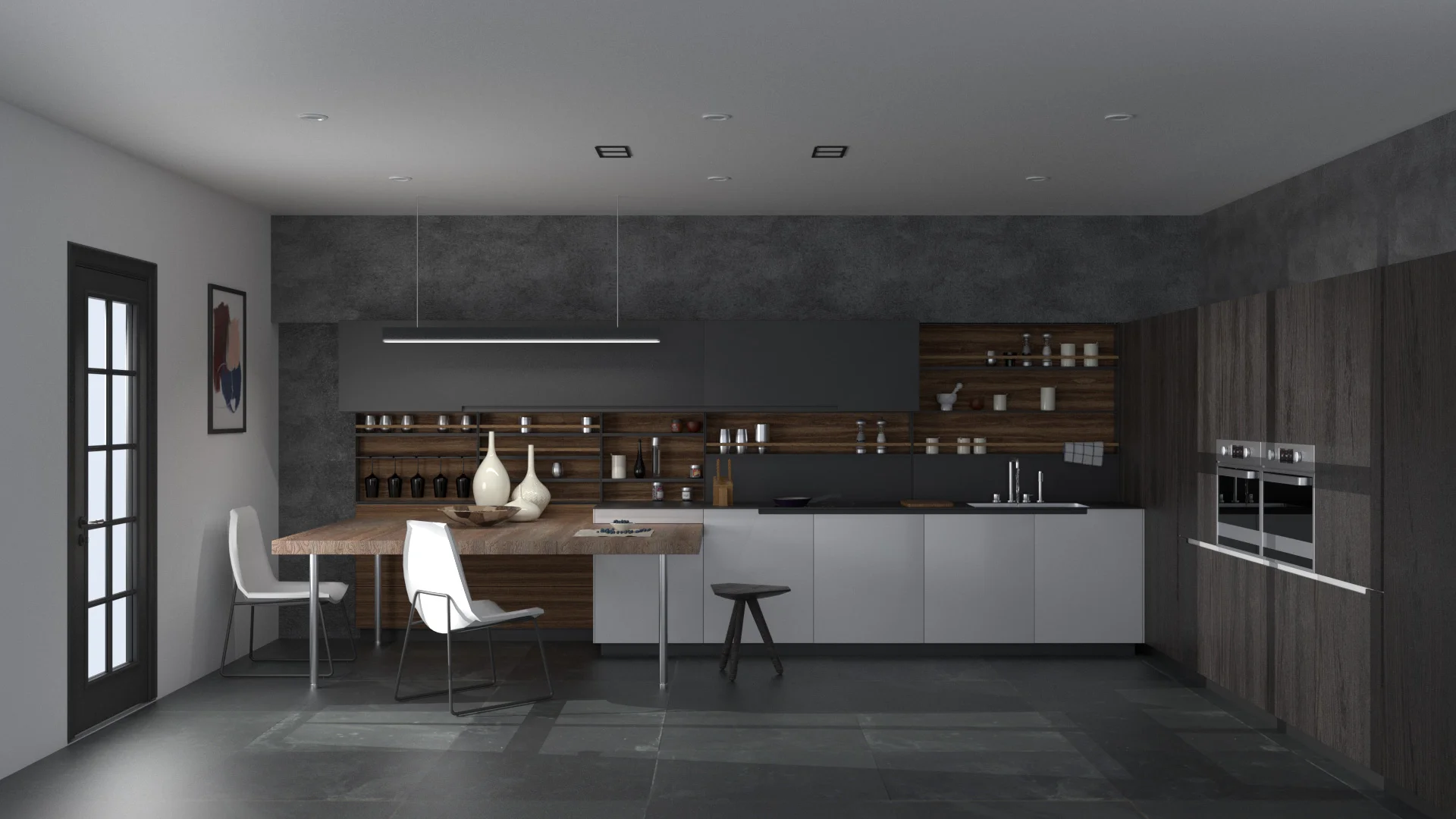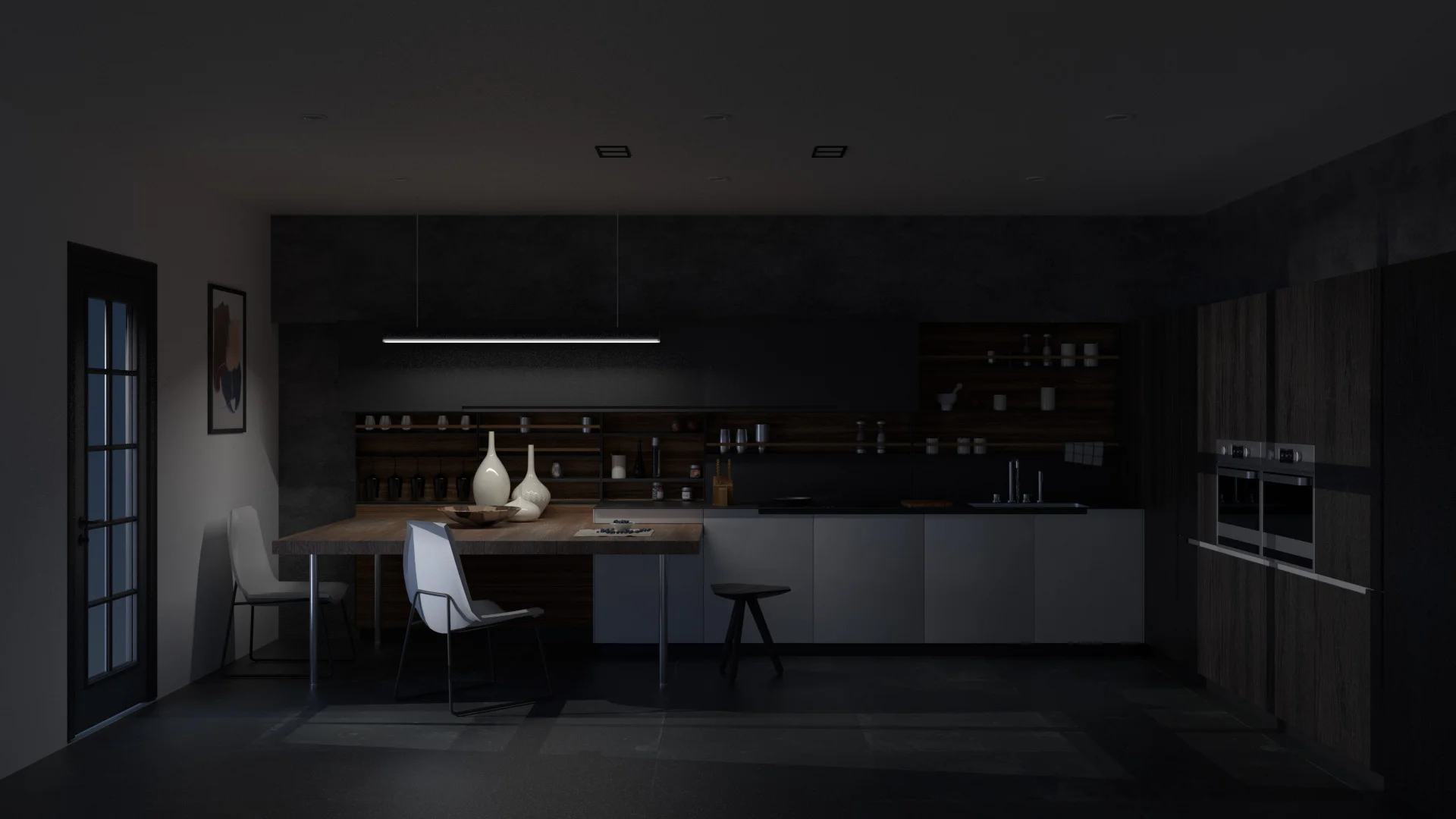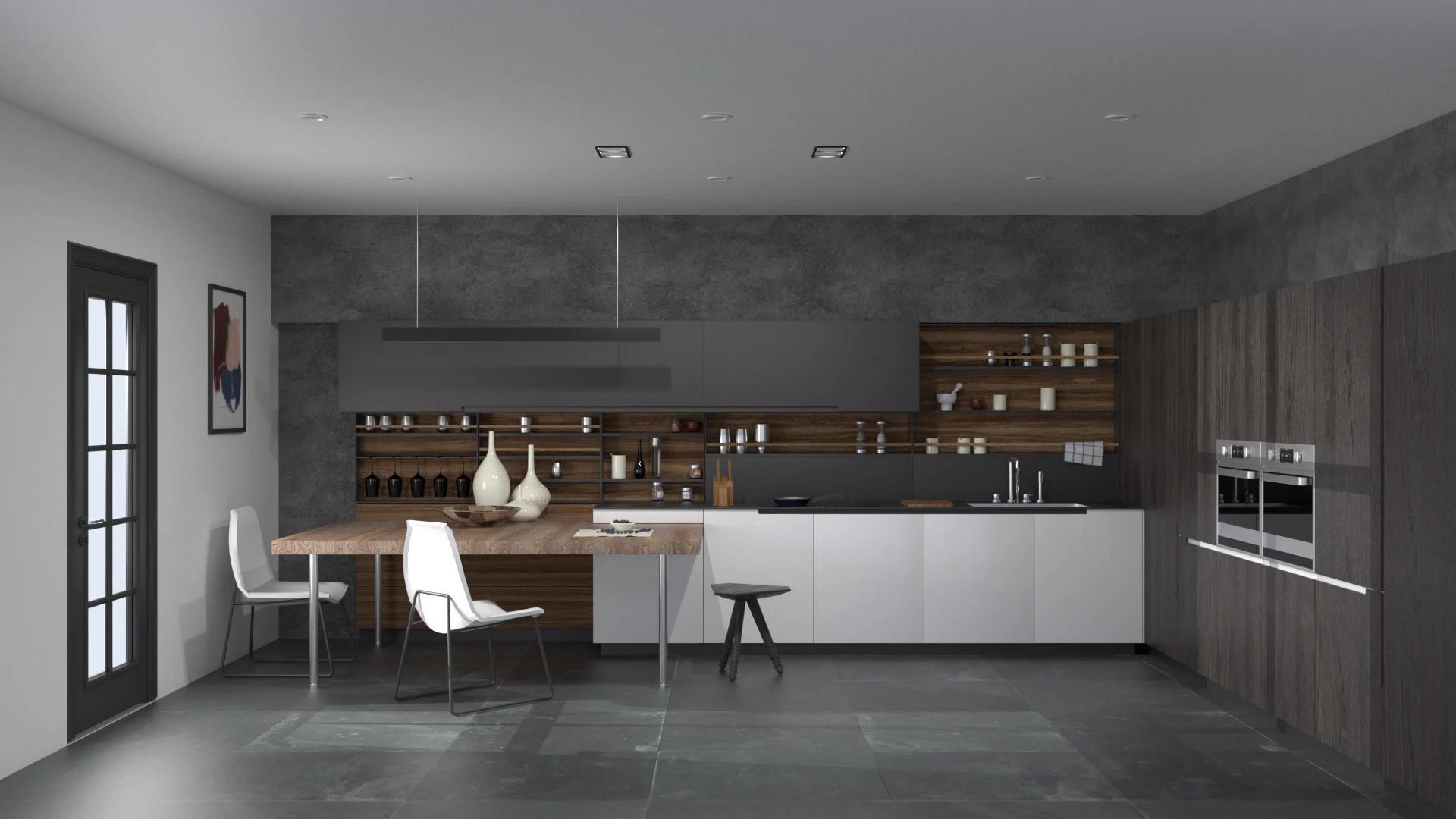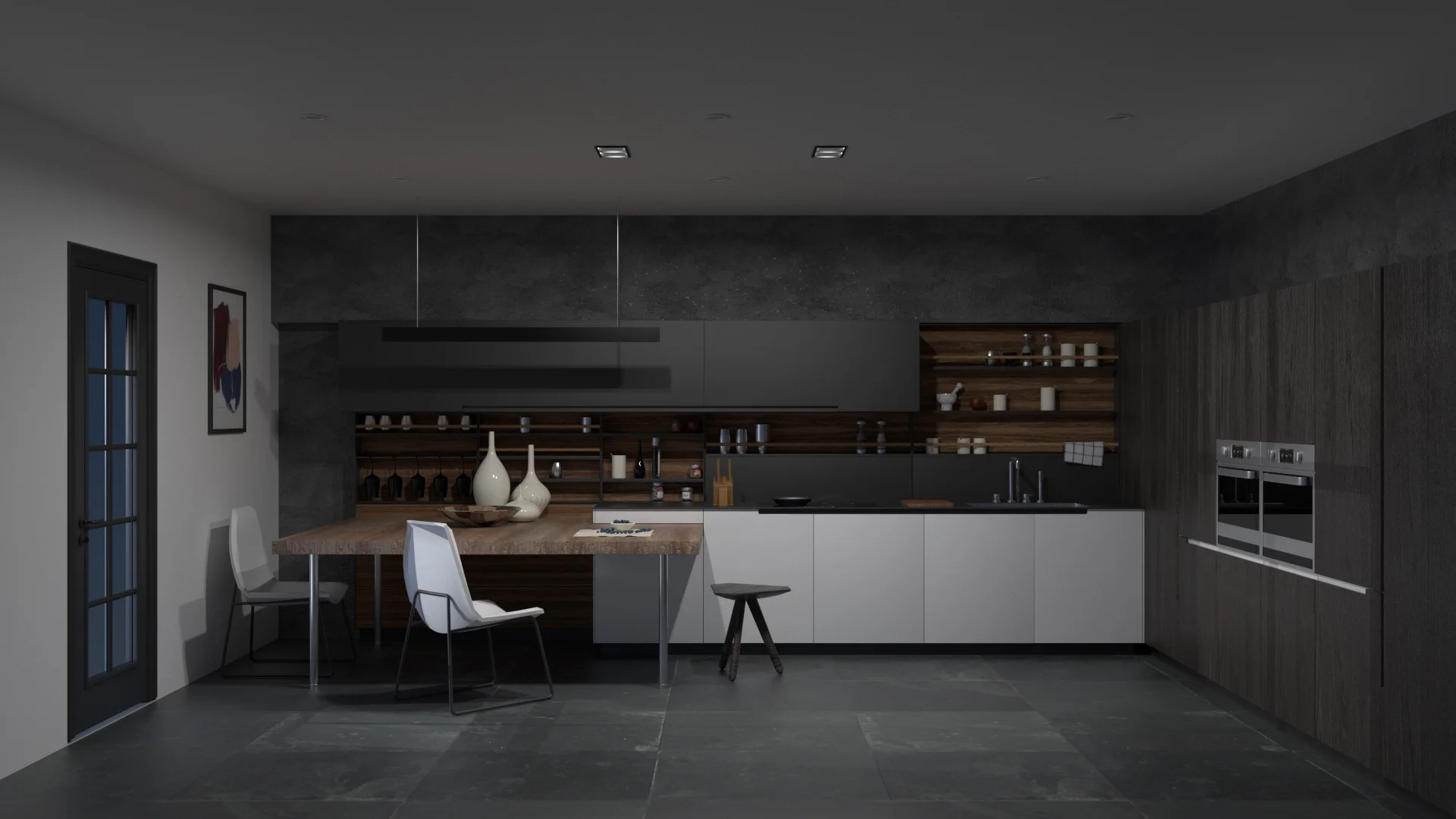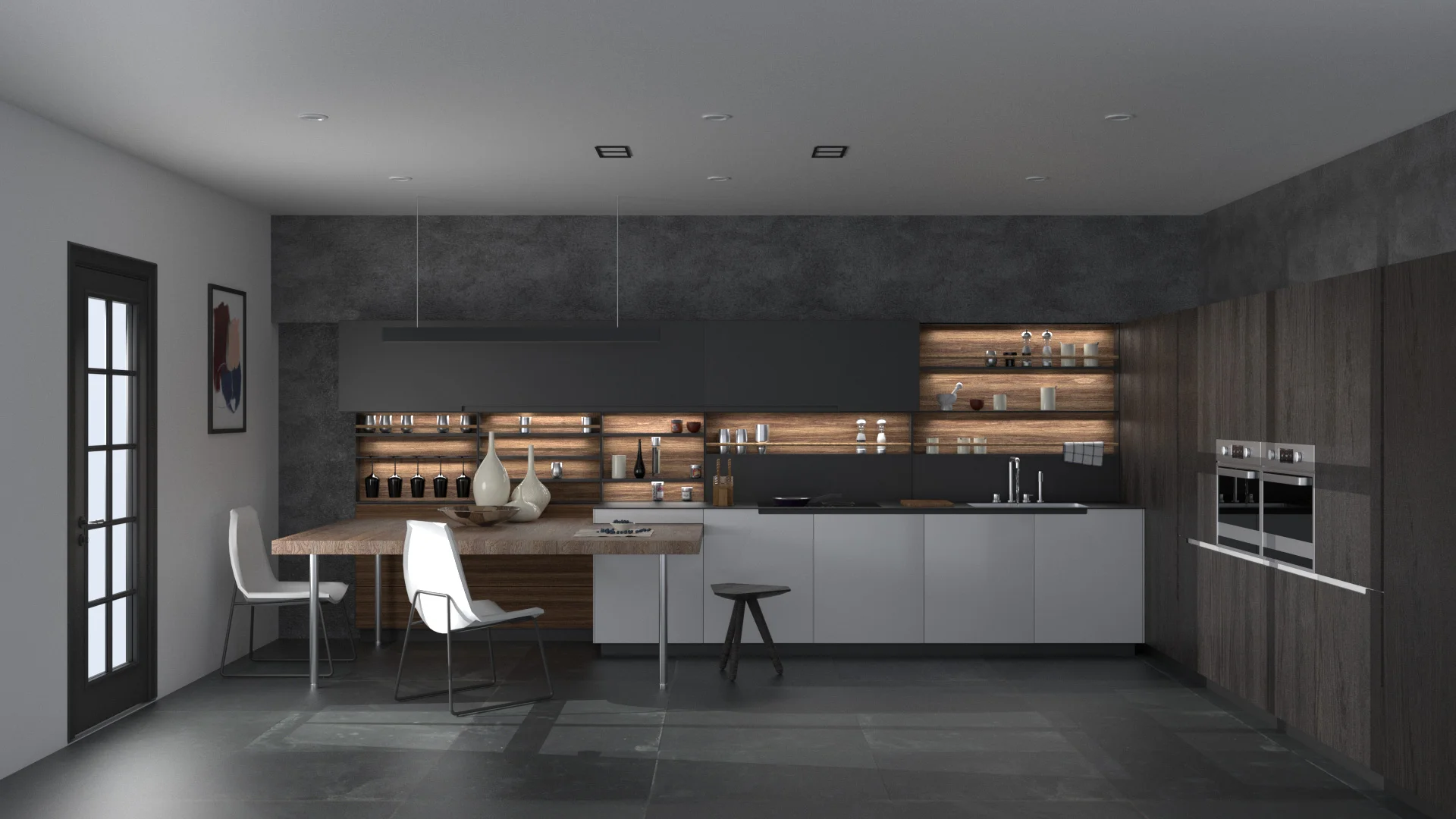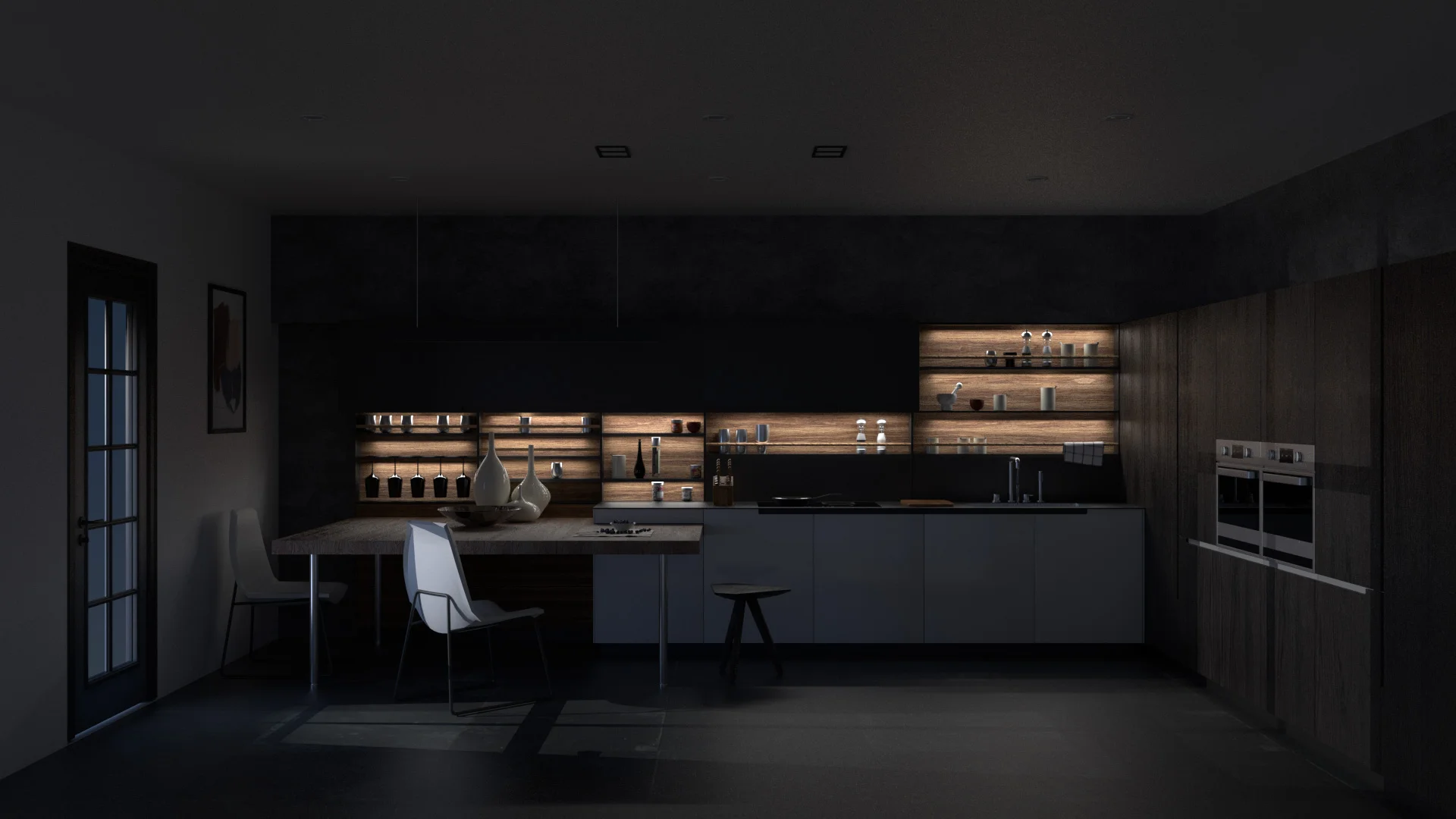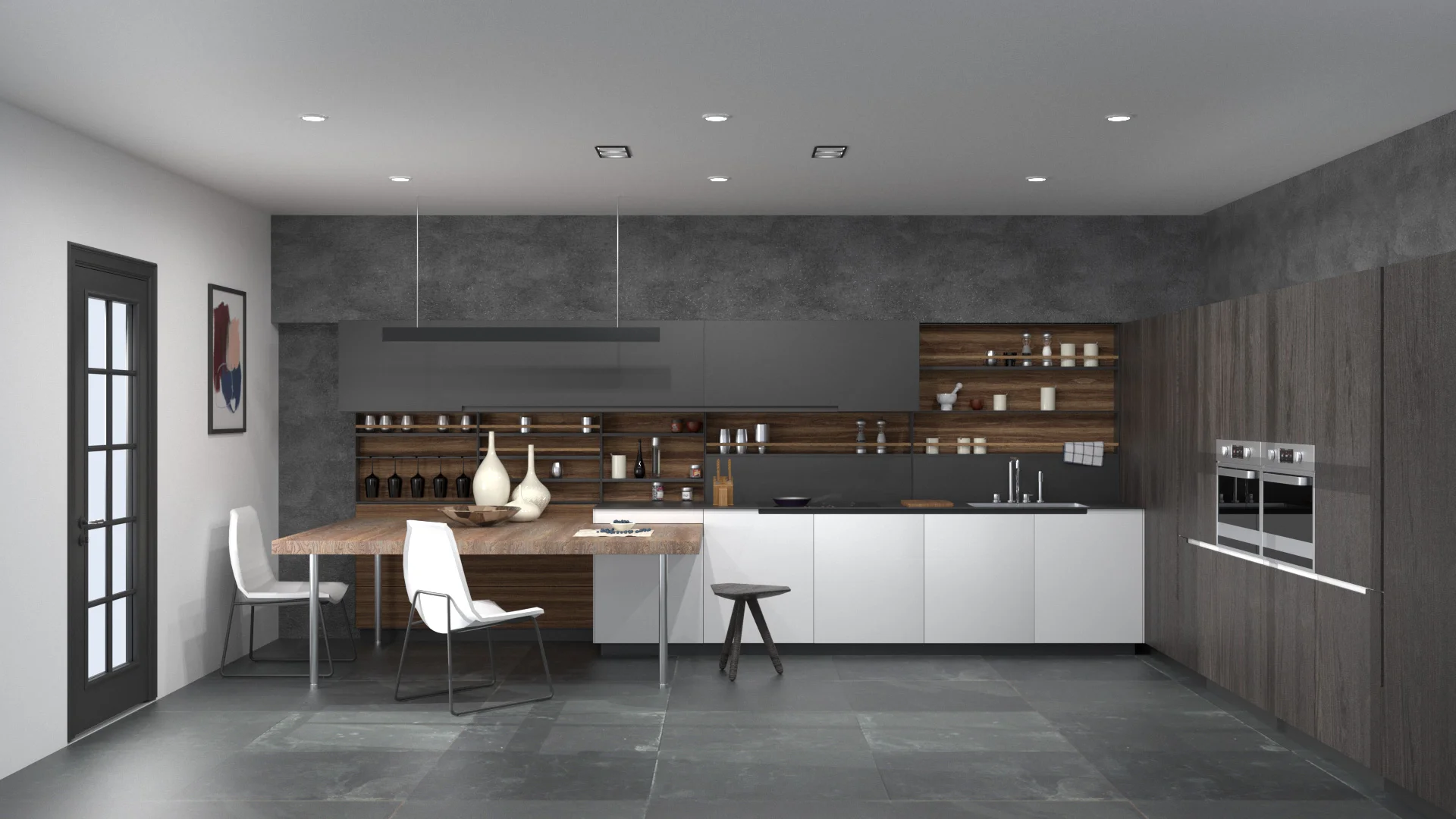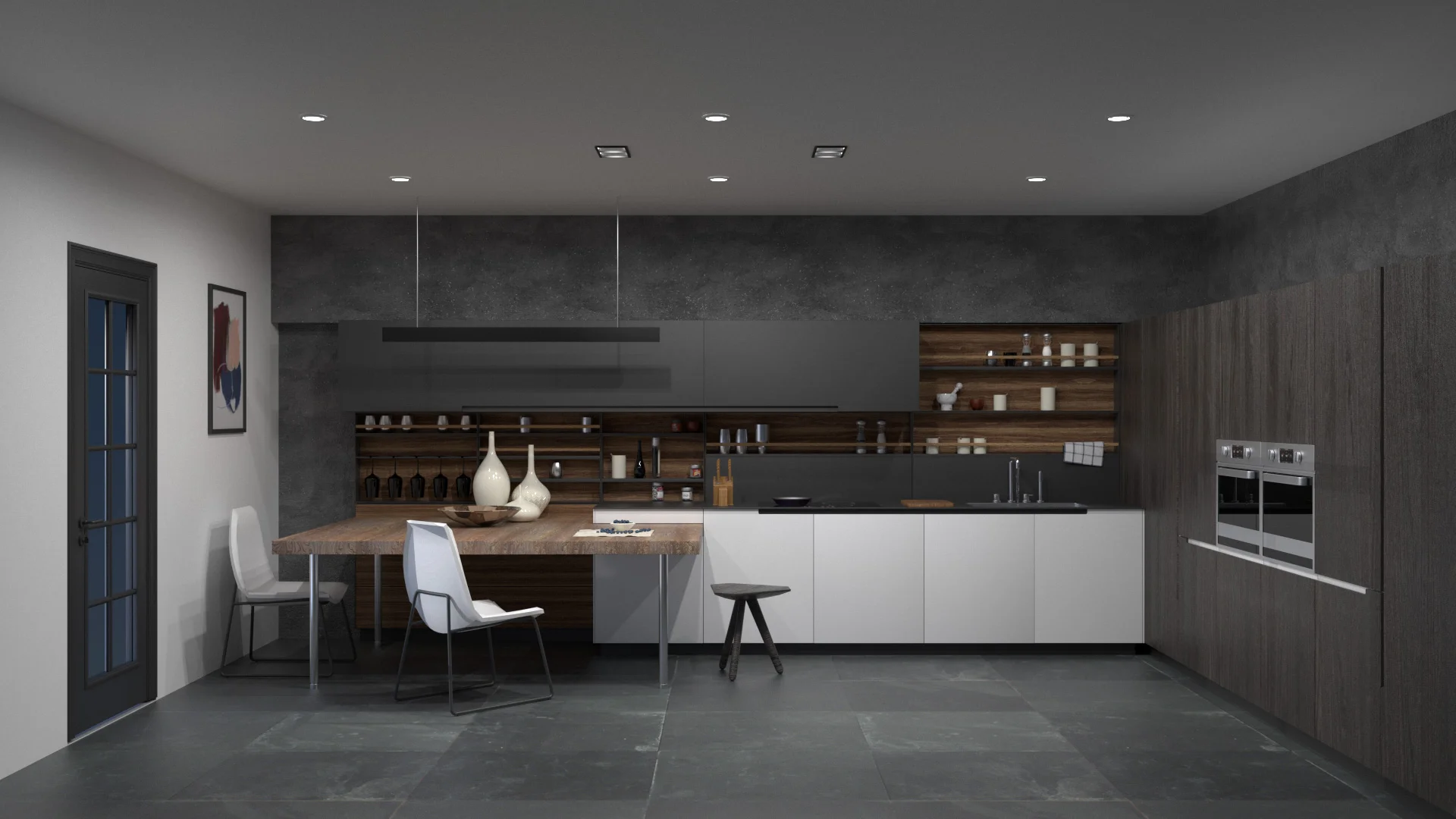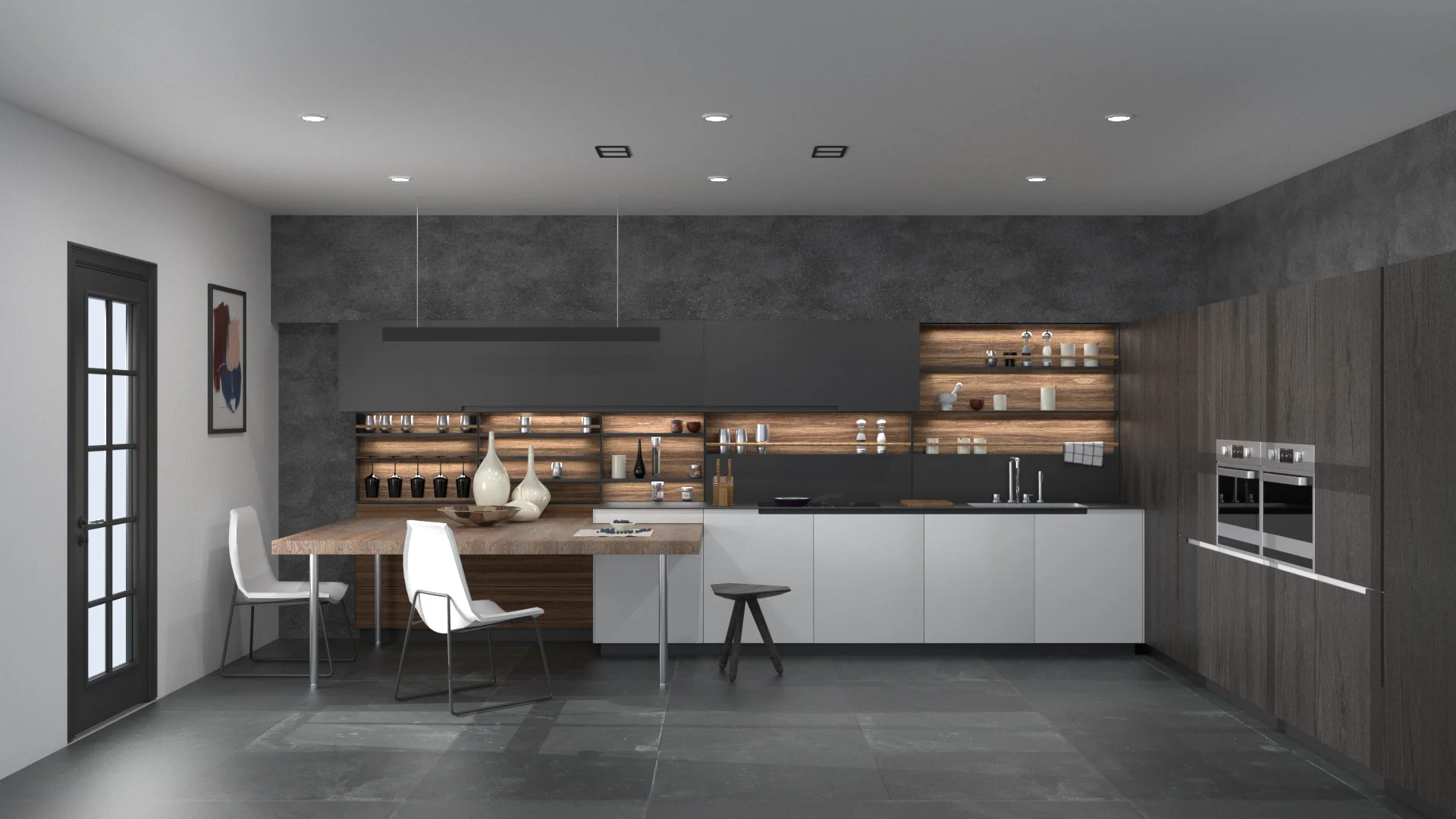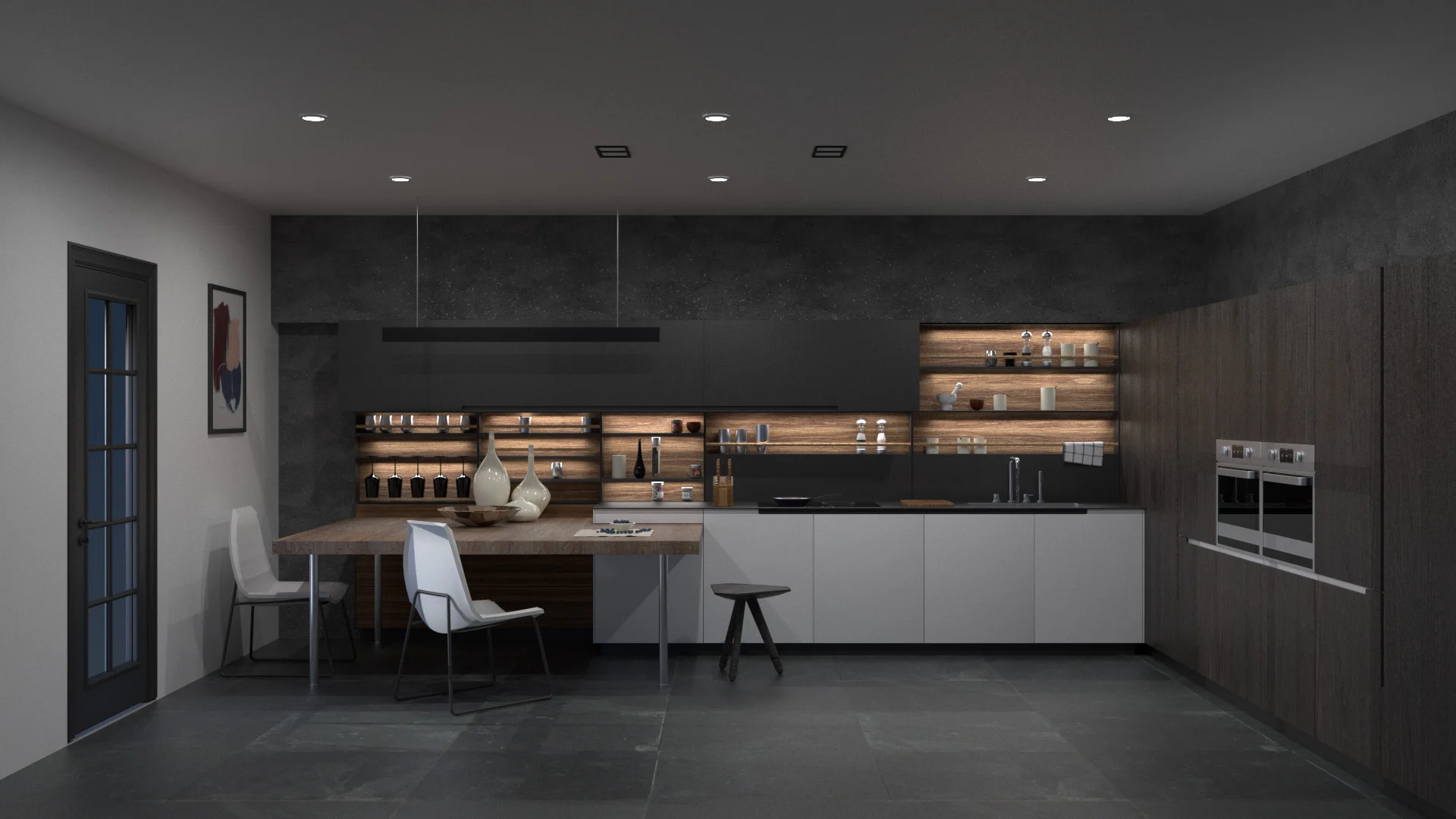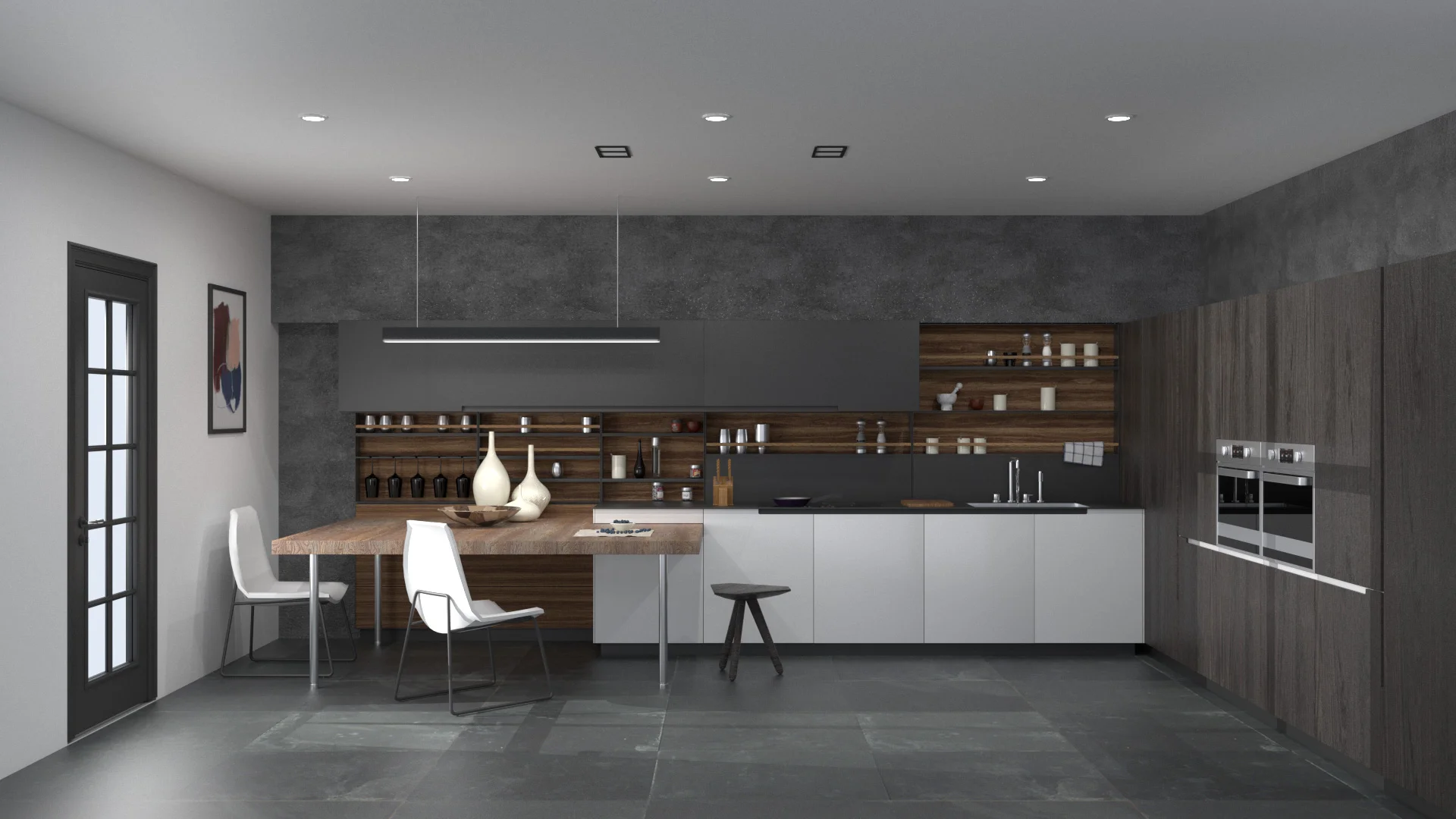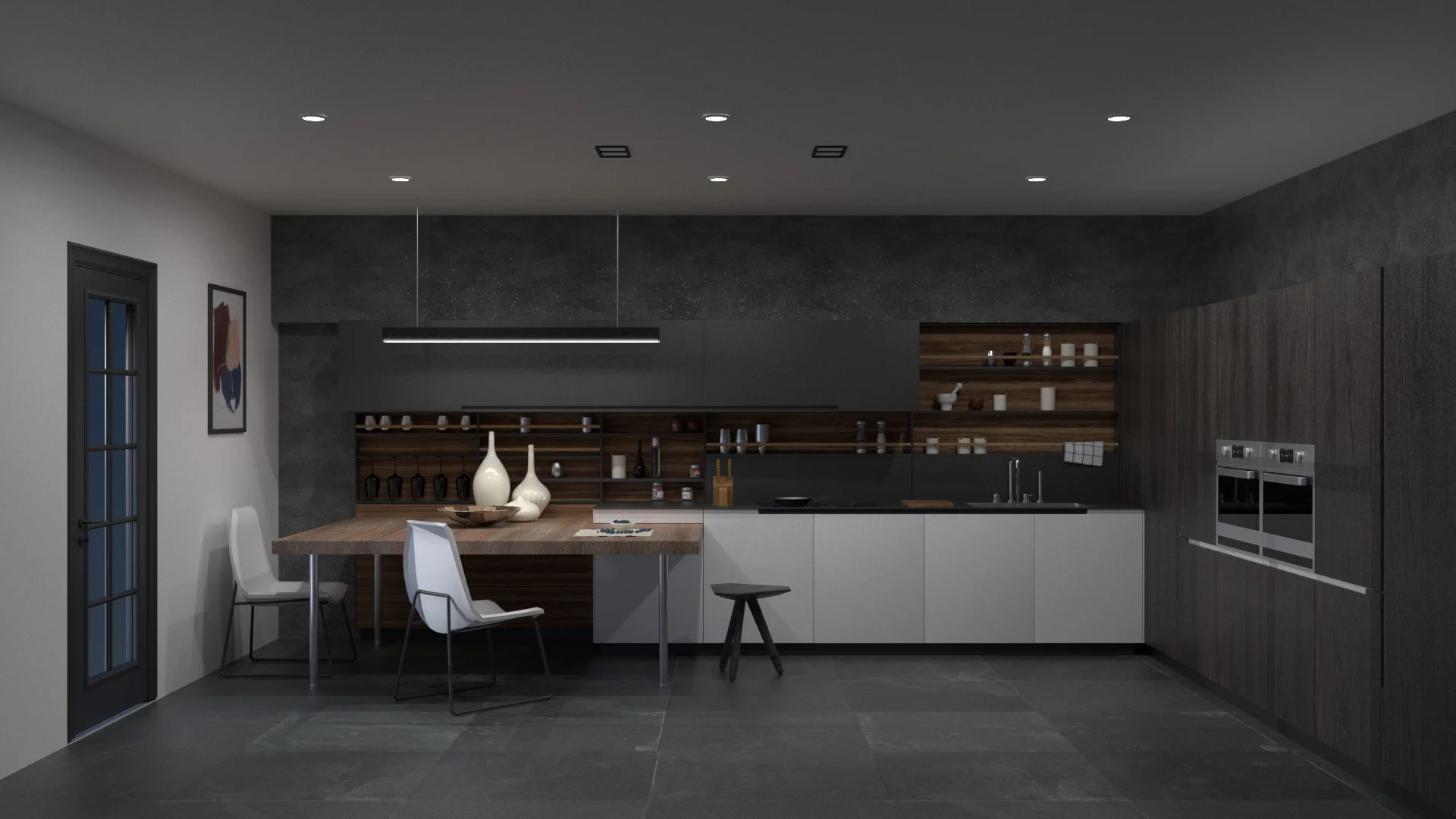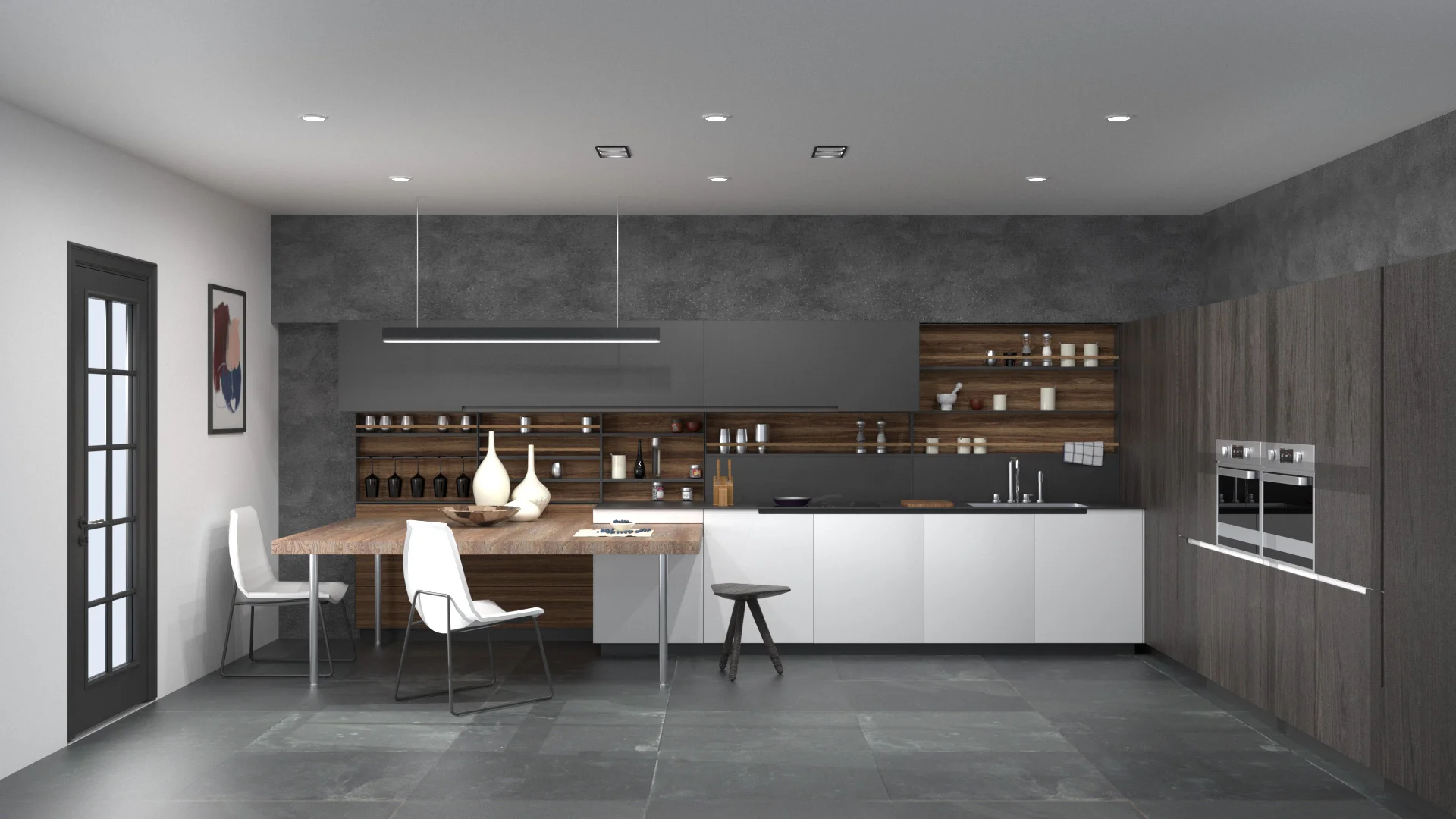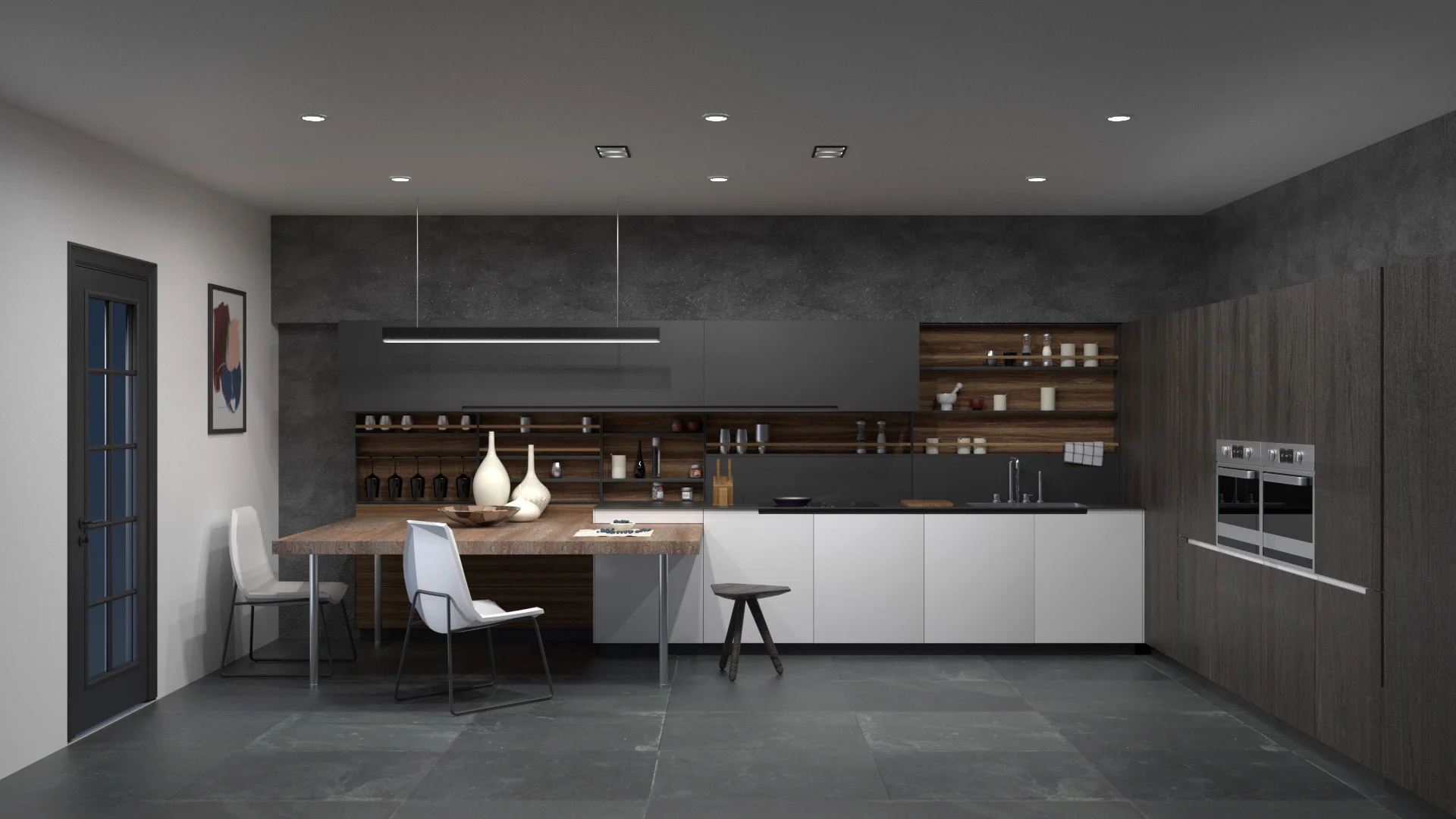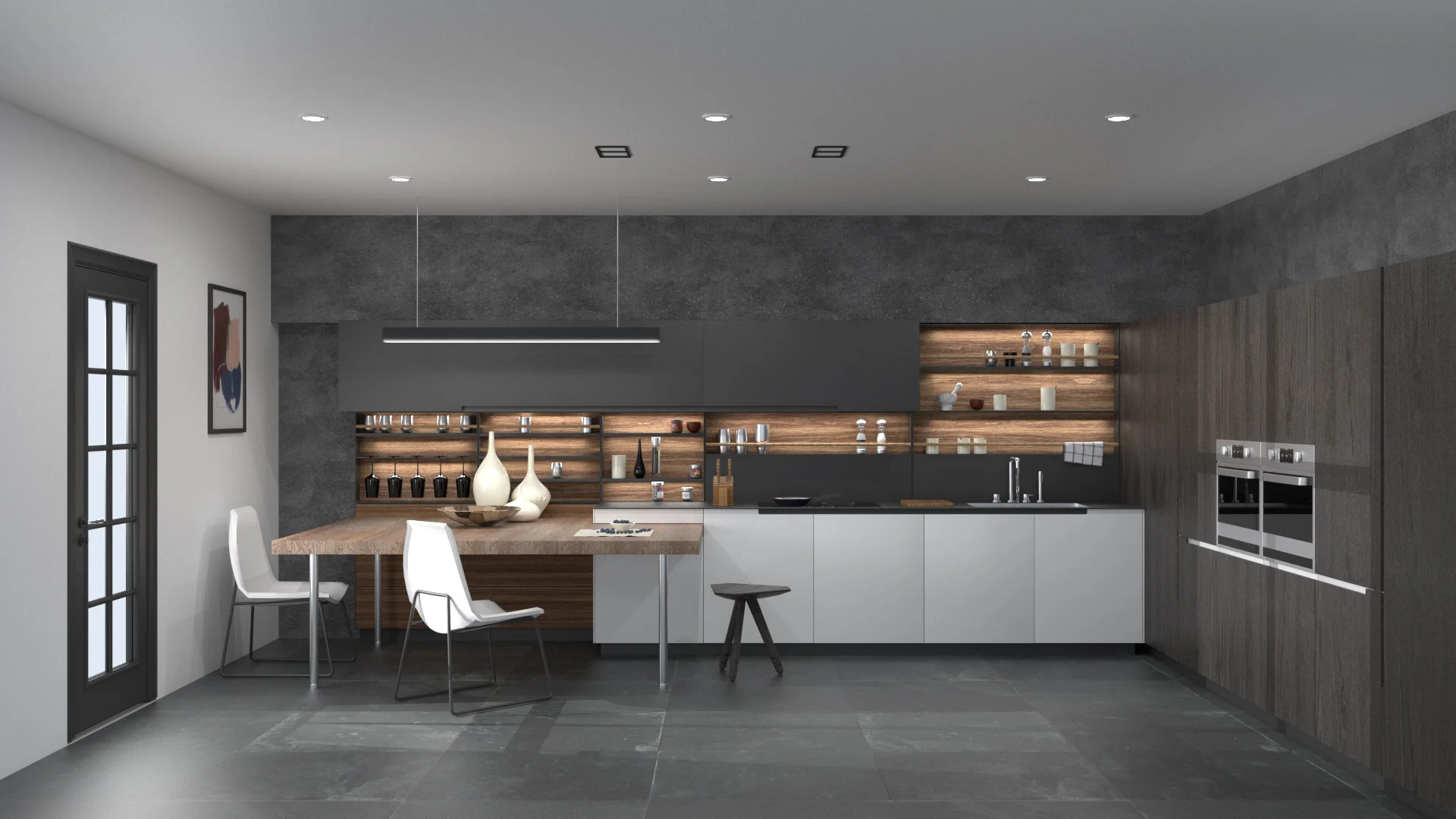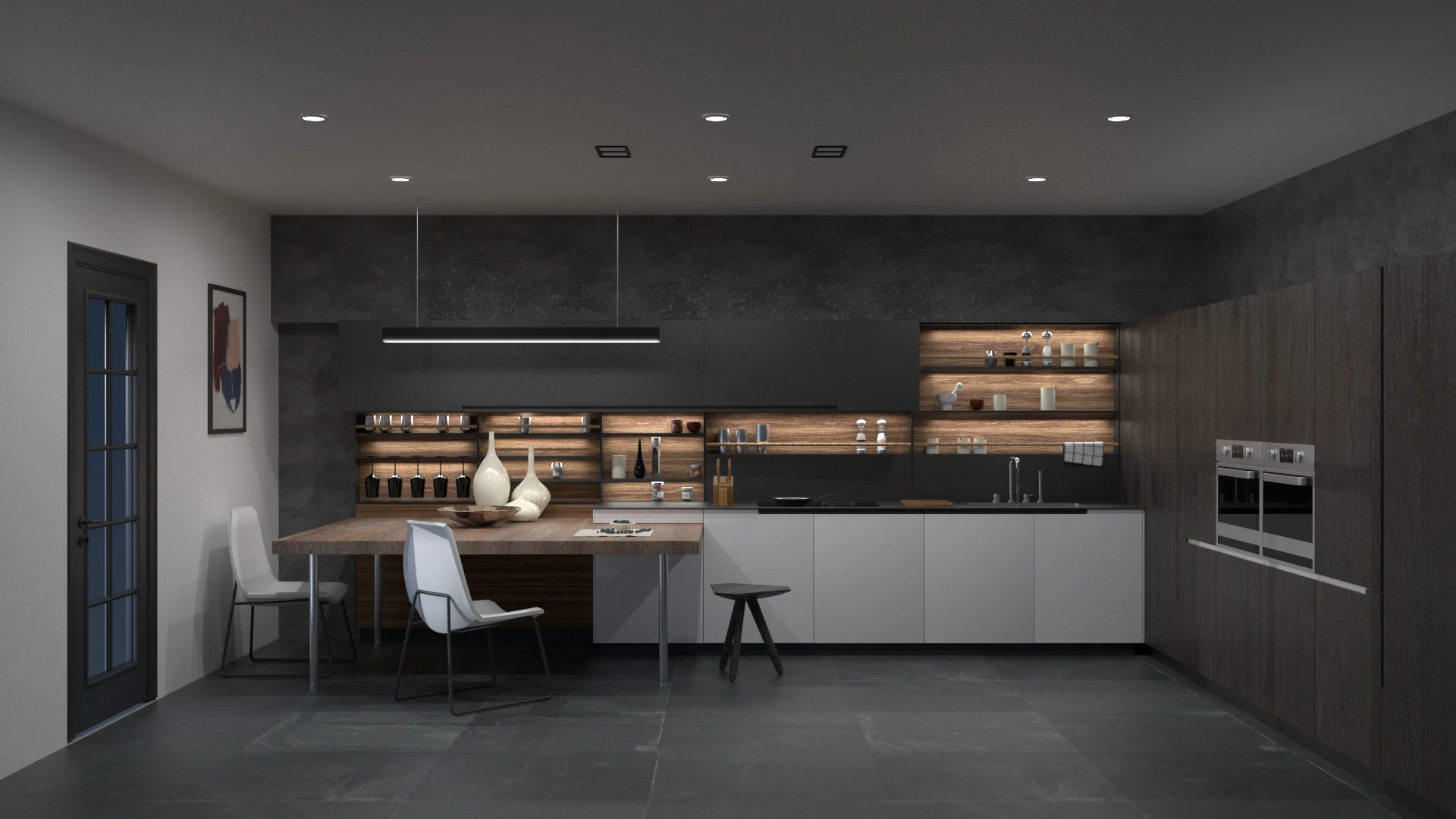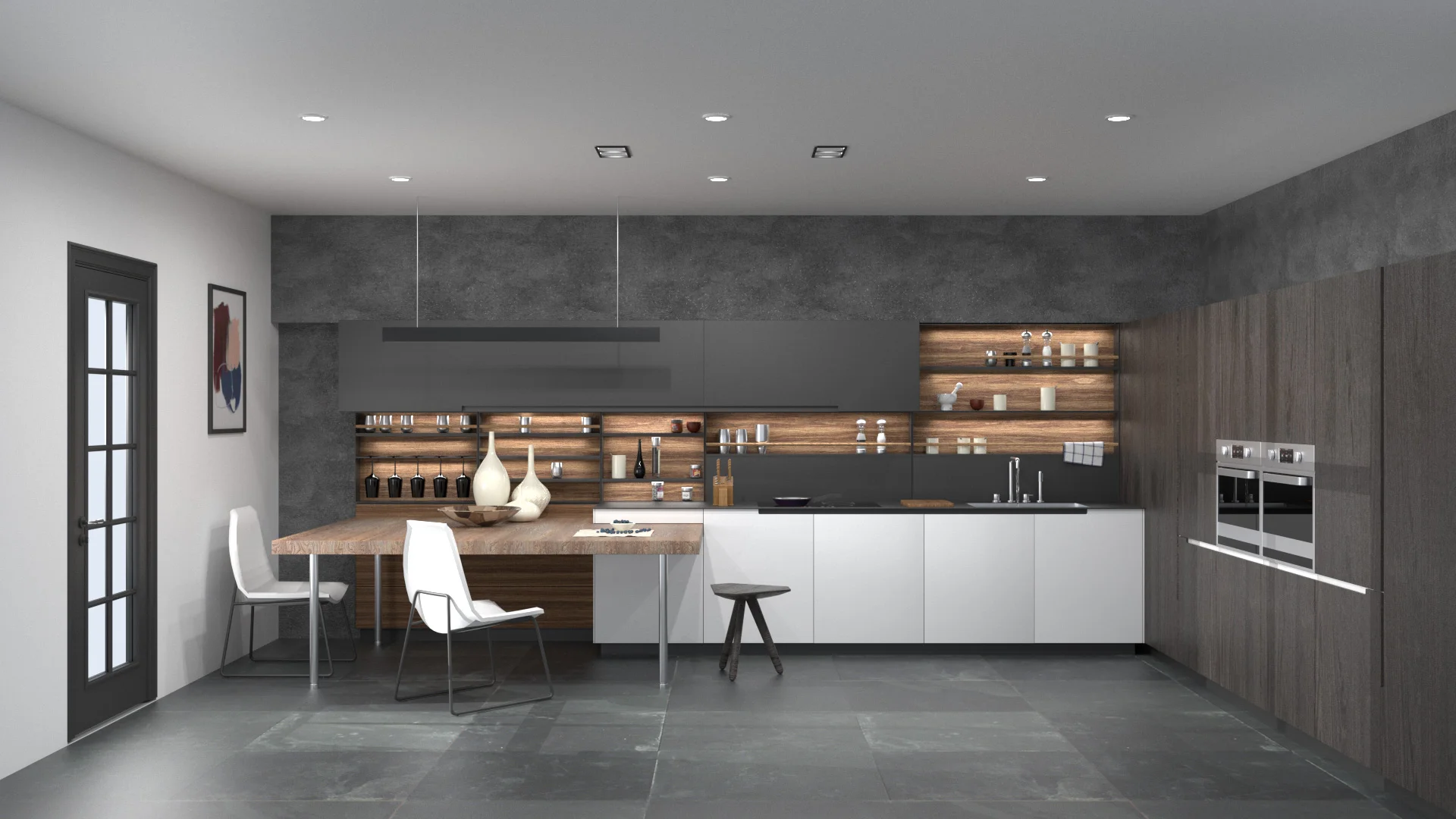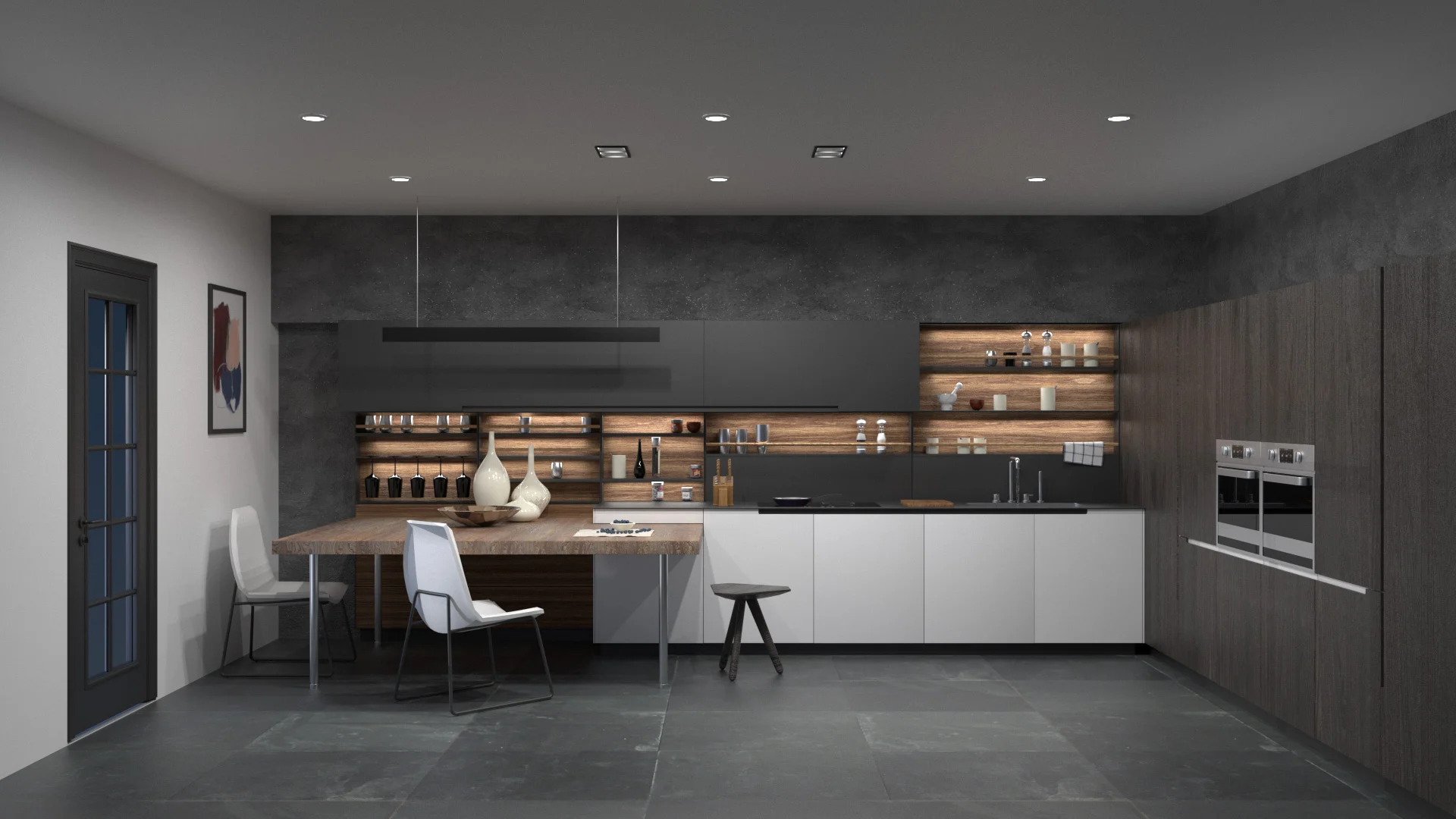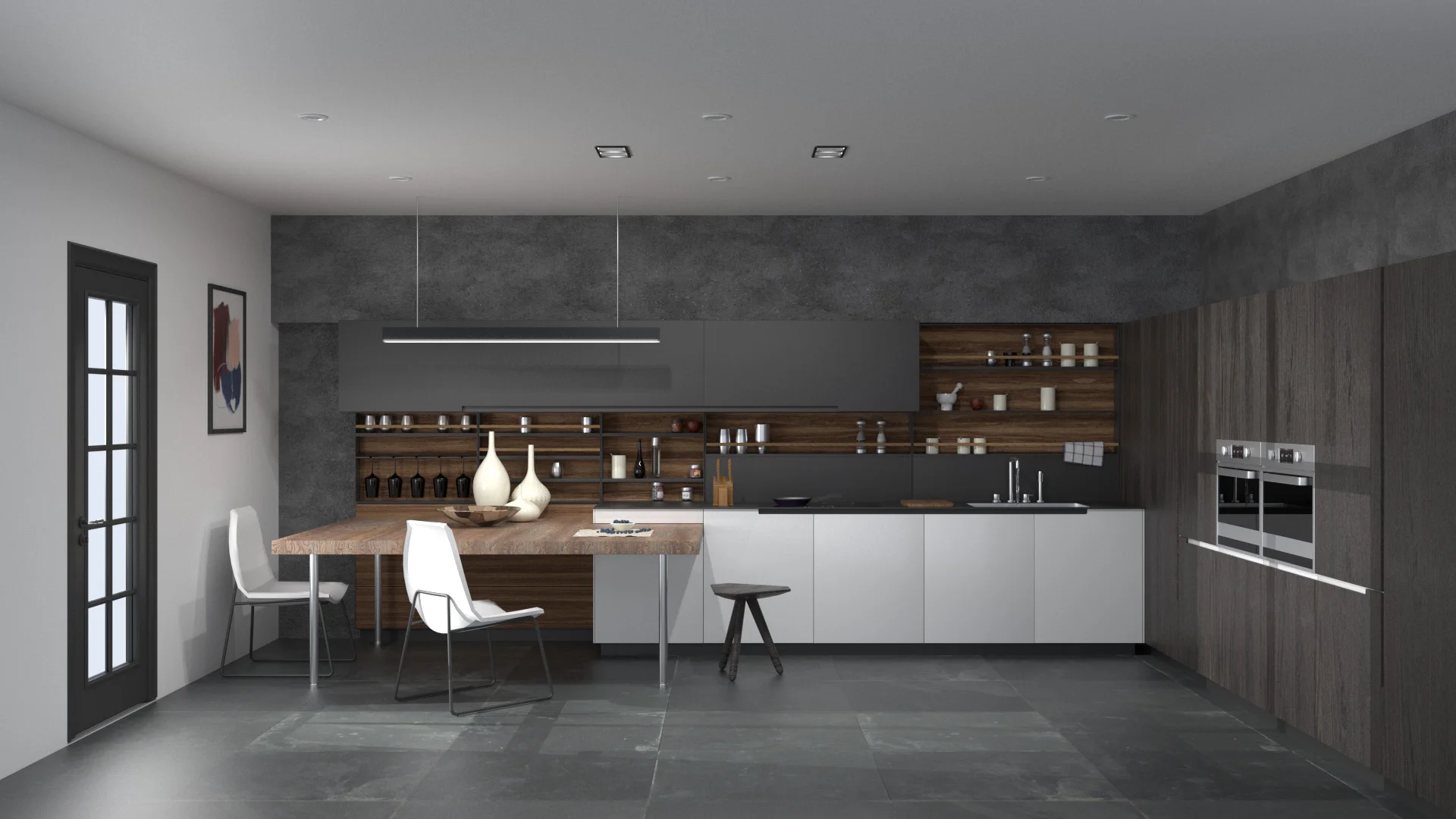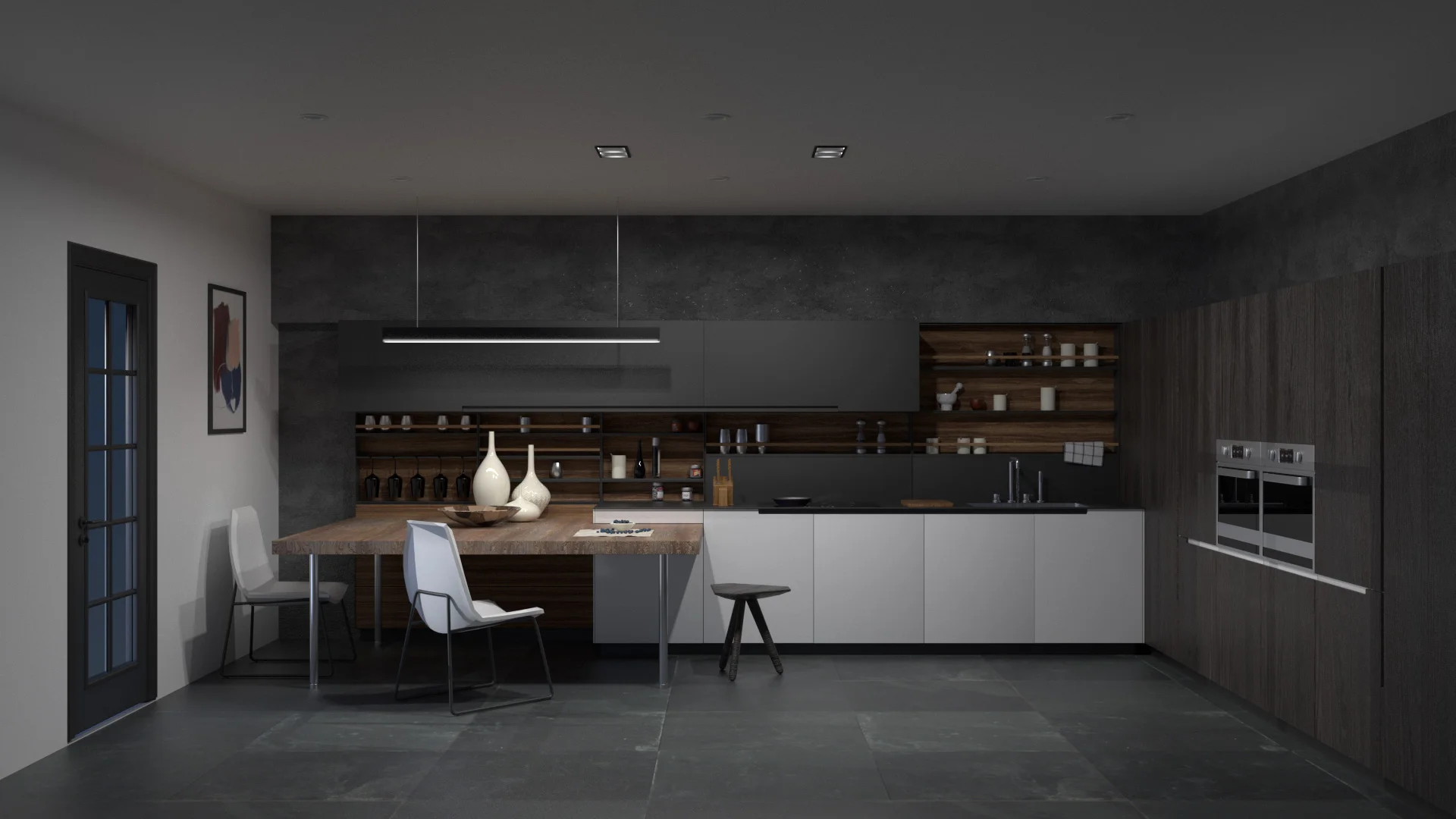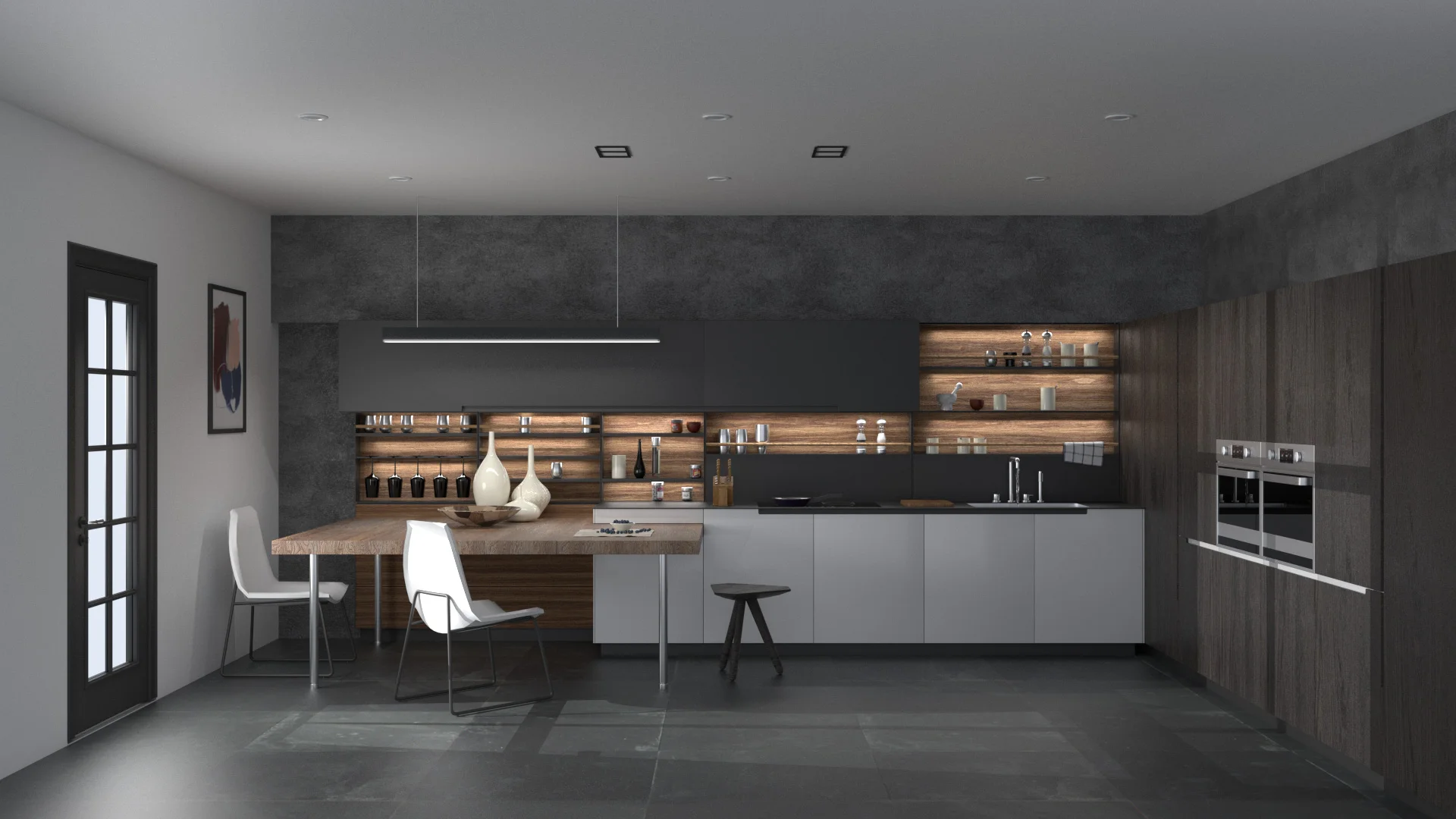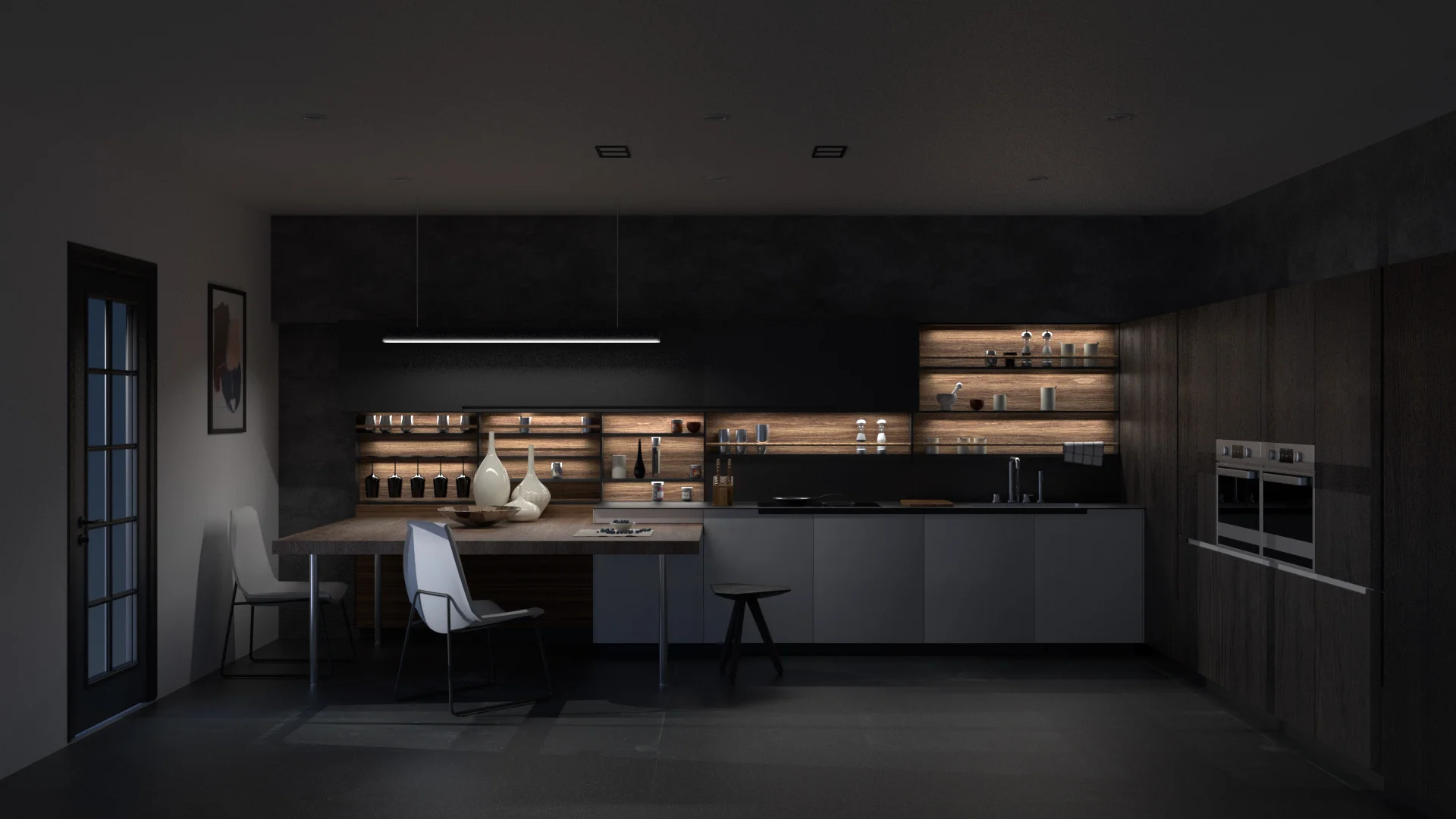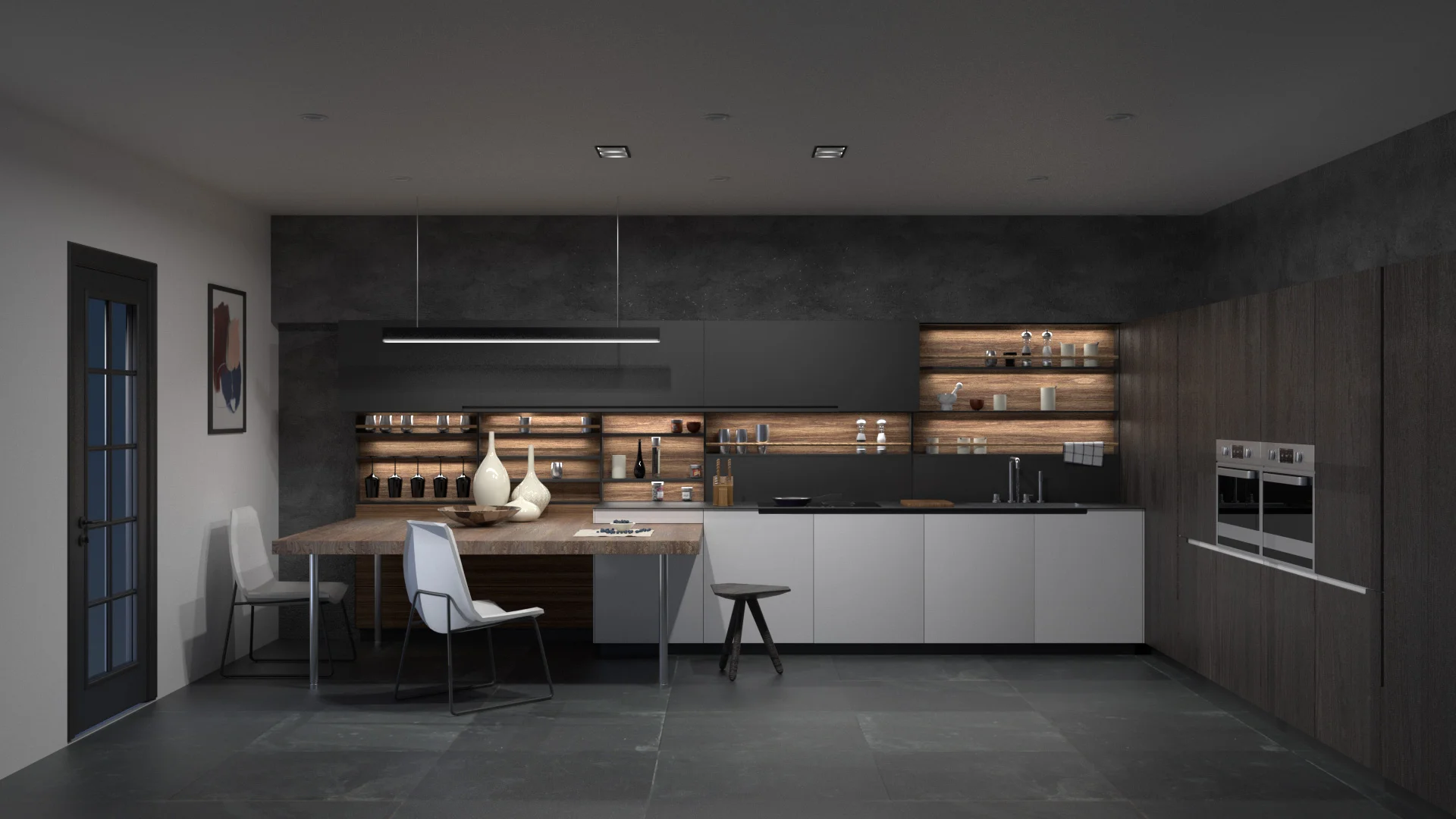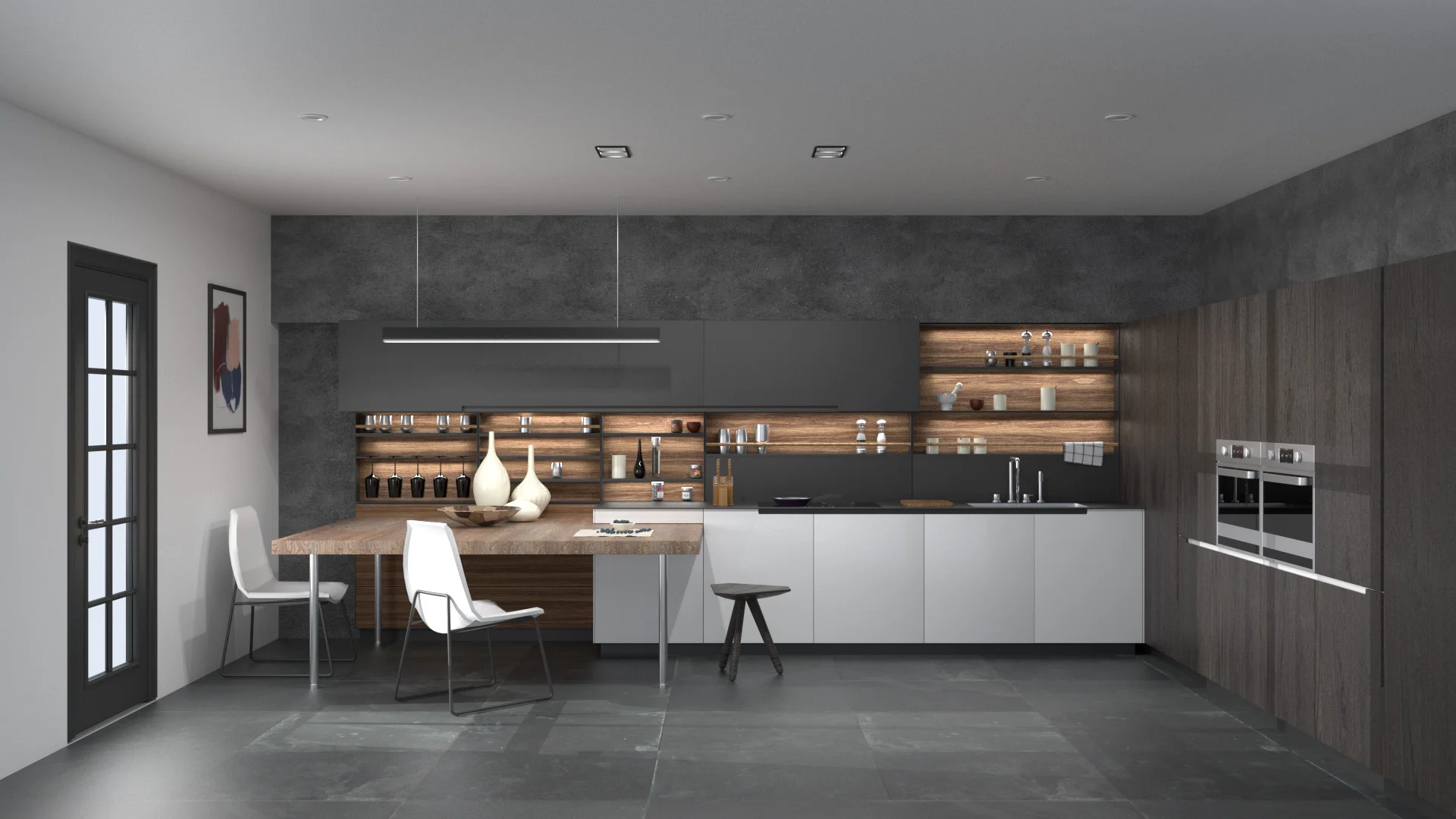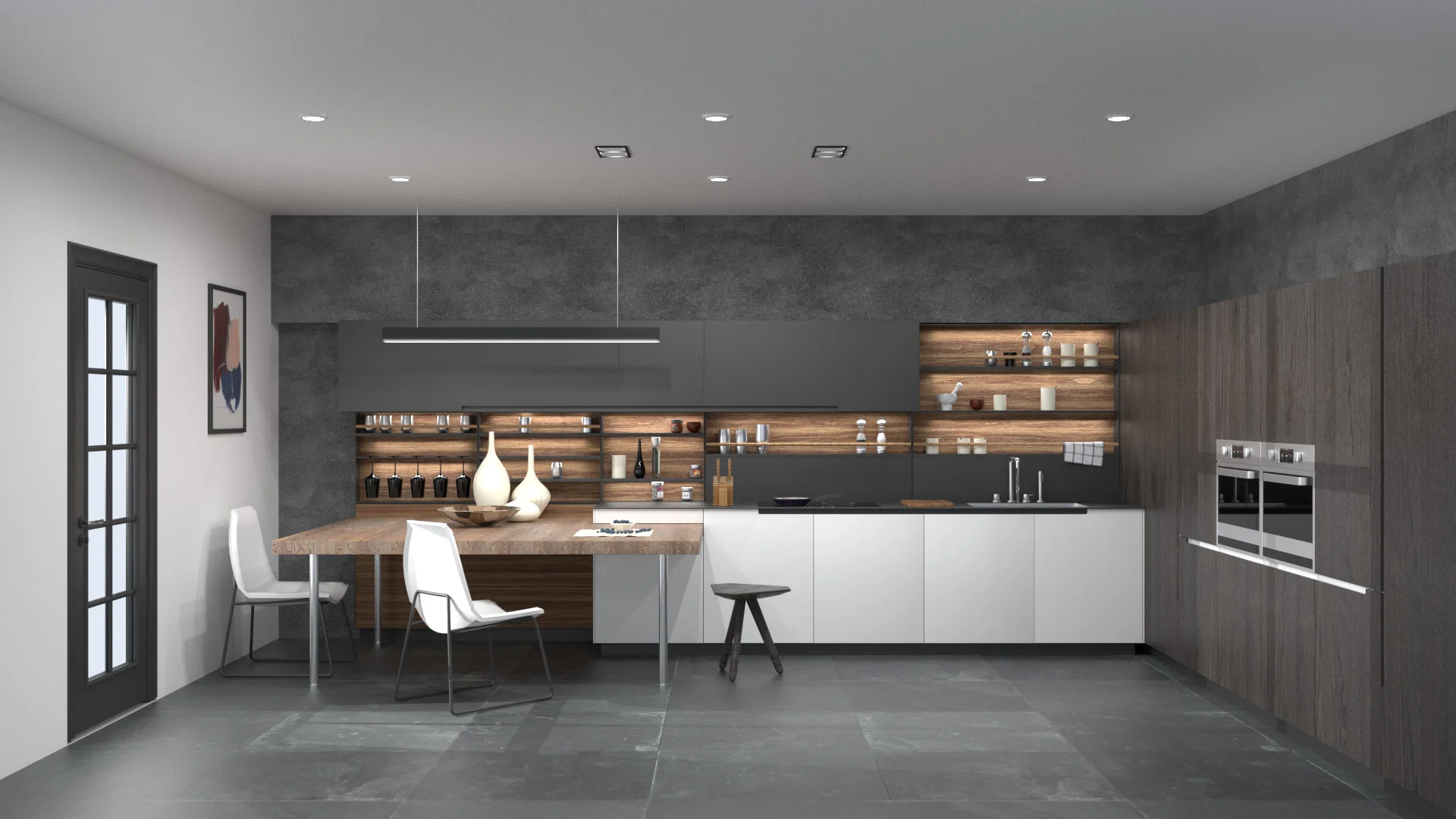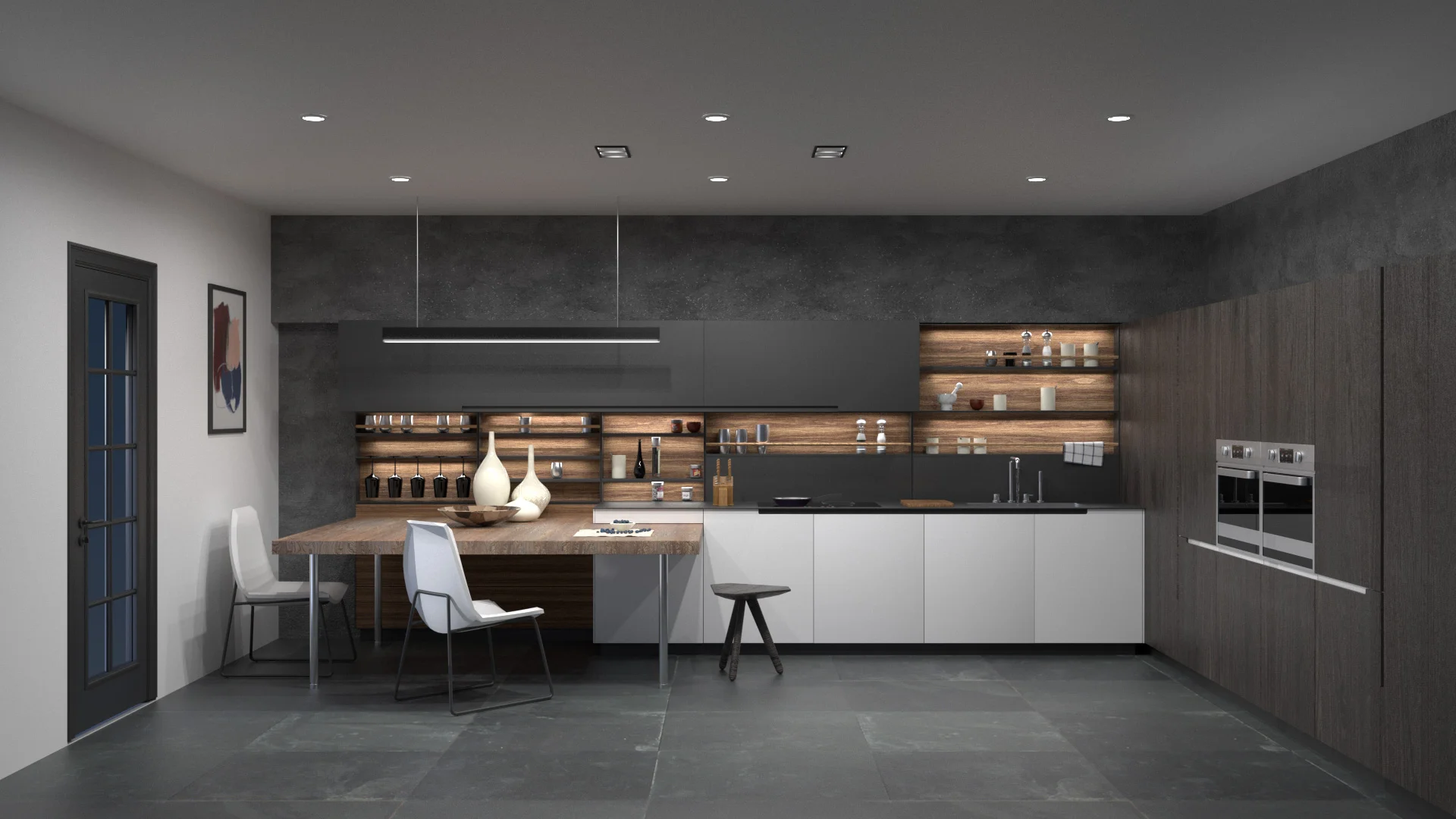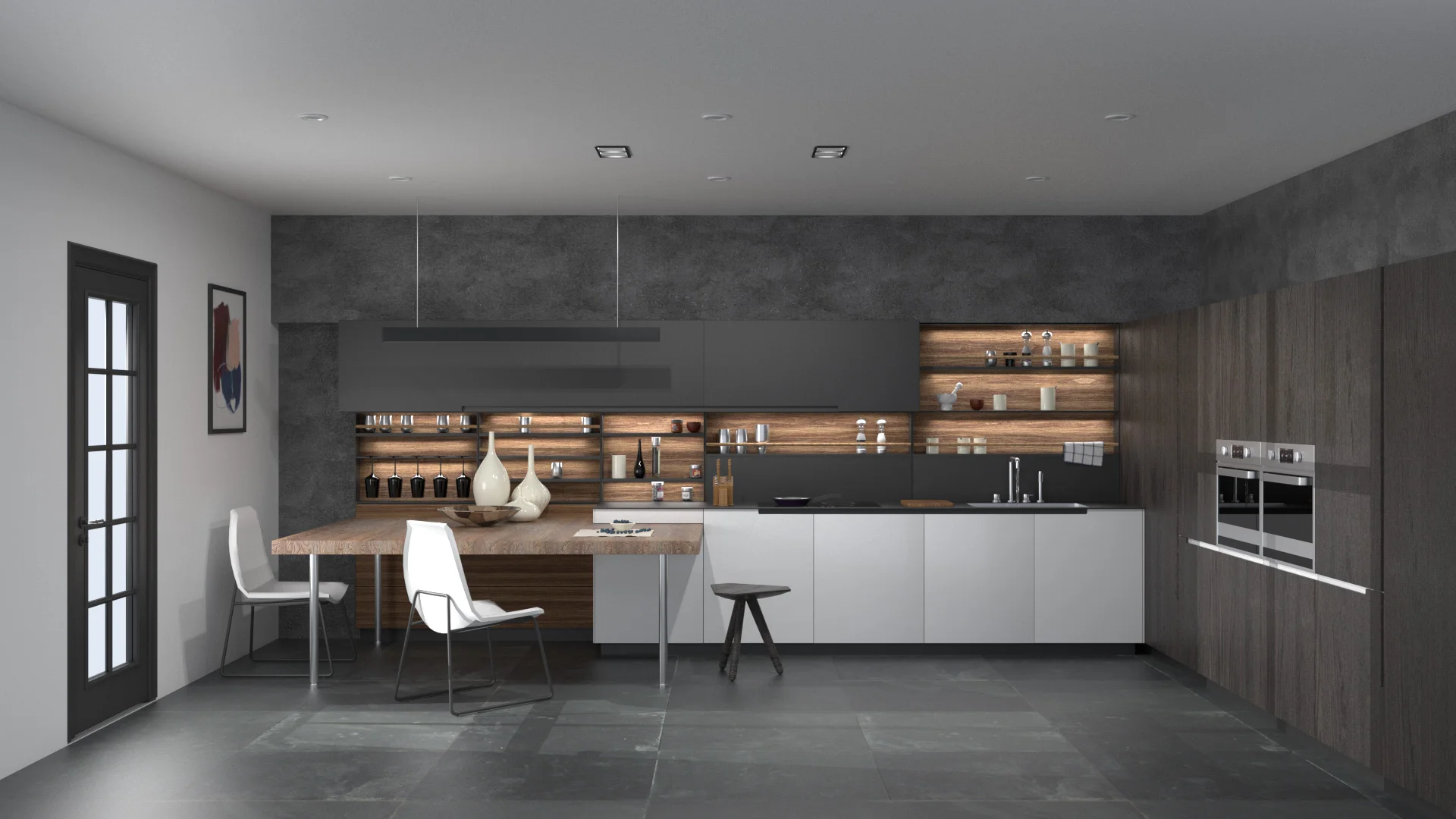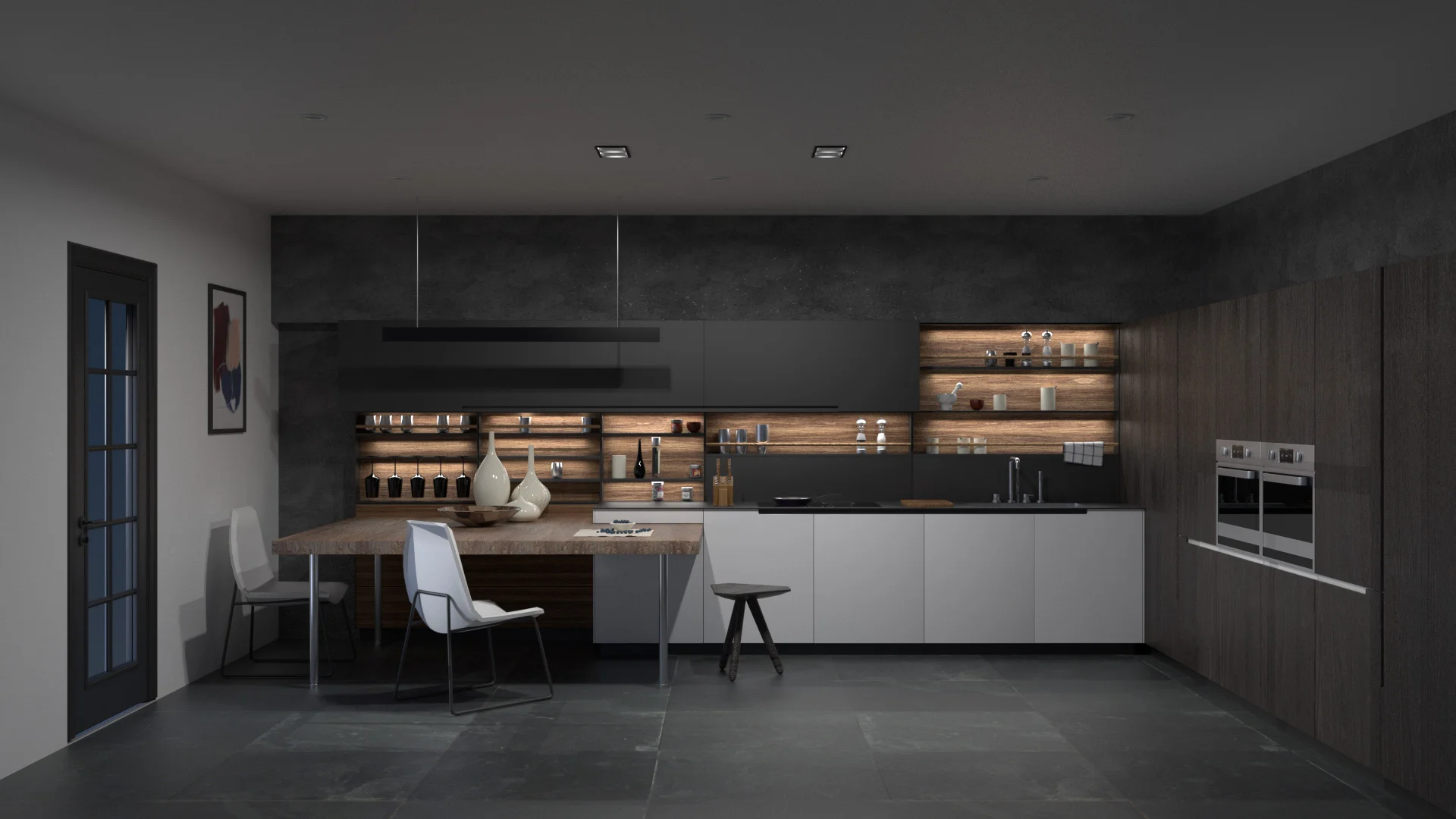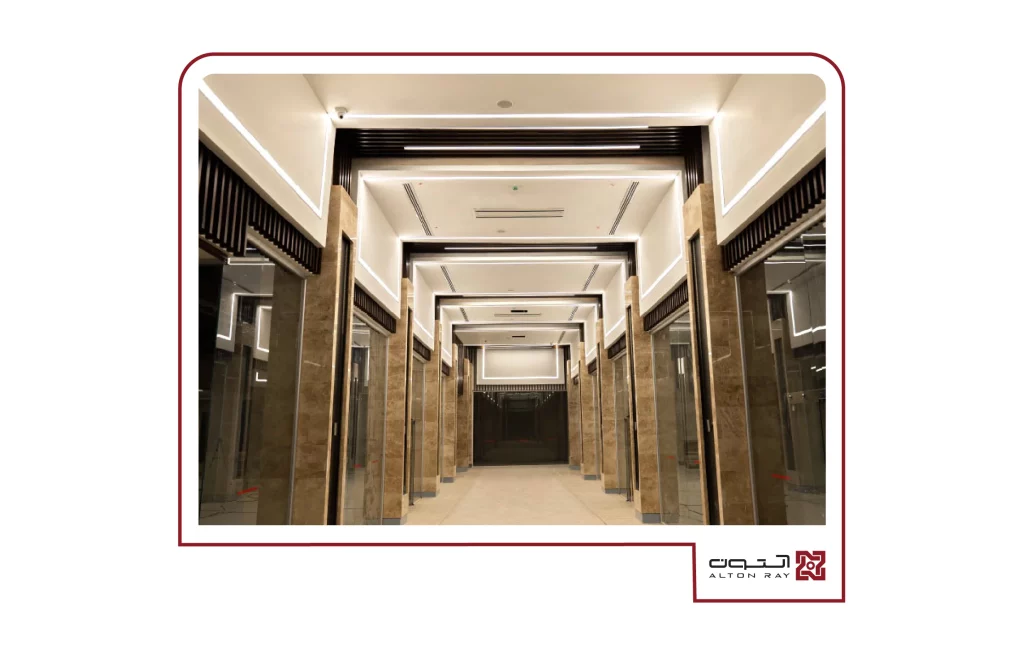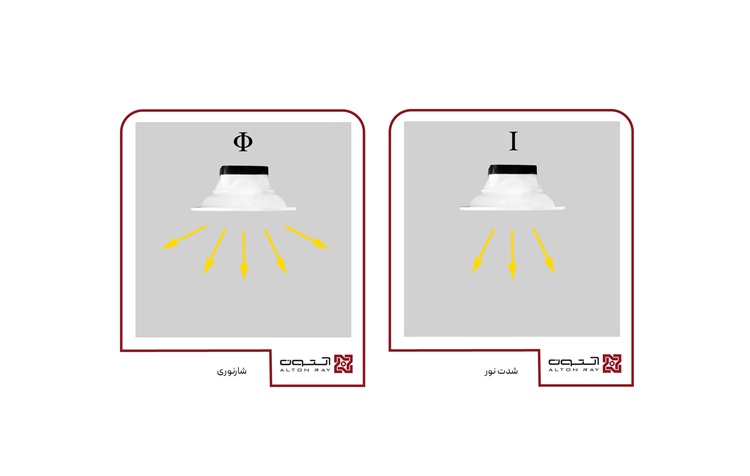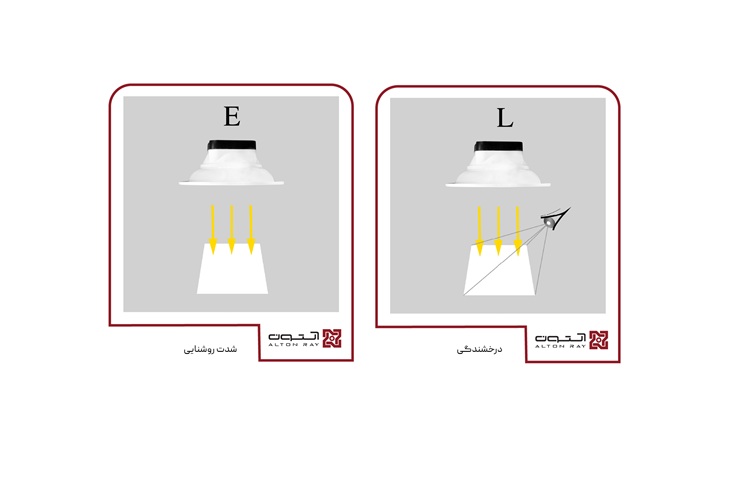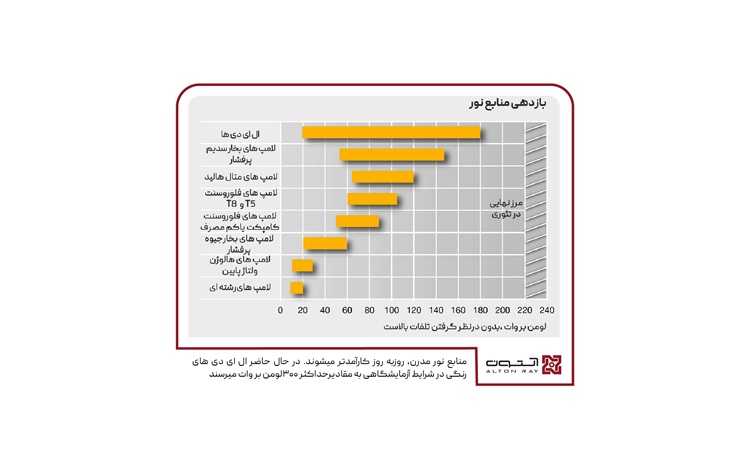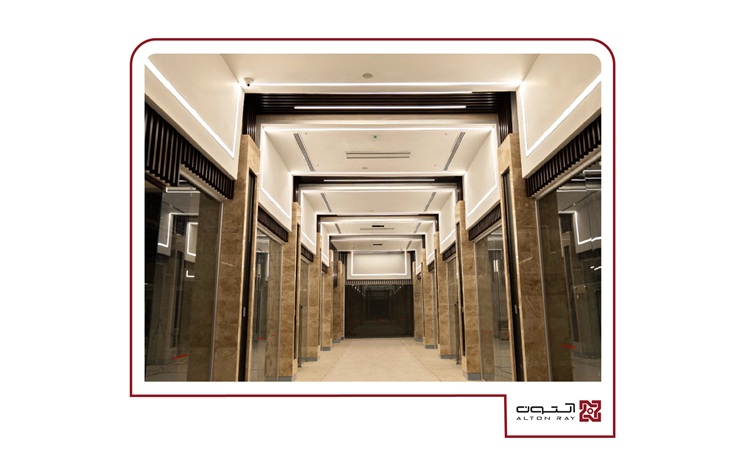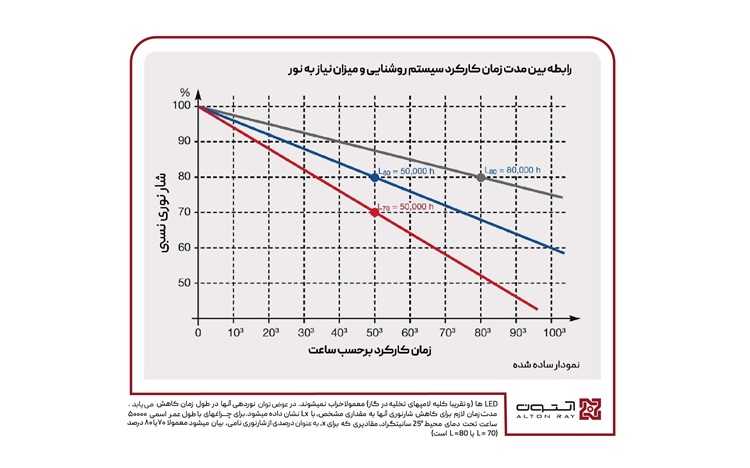Designing an effective lighting system requires familiarity with the key principles and components of lighting technology. Concepts such as luminous intensity, luminous efficiency, and maintenance factor are important foundations in this field.
Luminous flux φ
Luminous flux represents the total light emitted by a light source in all directions and is measured in lumens (lm). This value is either measured using specialized equipment or calculated through computational methods.
Luminous flux is a measure of the total brightness of a light source; the brightness perceived by the human eye and measured according to the spectral sensitivity of the eye with the standard curve V(λ) (based on DIN5031-1).
In modern times, with the advent of efficient LEDs, the lumen unit has gradually replaced the energy consumption (watts) that was previously used to determine the brightness of a lamp. The luminous flux of a lamp (as opposed to the luminous flux of a bulb) represents the amount of light loss due to the design of the lamp.
Light intensity I
To analyze the distribution of light in a lighting system, it is not enough to know the luminous flux. Luminous intensity is the amount of luminous flux emitted in a specific direction and is expressed in candela (cd).
The pattern of luminous intensity distribution in lamps and reflector lamps is represented using polar diagrams, known as luminous intensity distribution curves (IDCs).
Luminous intensity E
Luminous intensity expresses how much light falls on a given surface and is obtained from the following equation:
E = \frac{φ}{A}
where φ is the luminous flux and A is the area of the illuminated surface. The unit of illuminance is lux (Lux or Lx).
Illuminance can be easily measured using a luxmeter. In environments such as offices, the work surface (e.g., the surface of a desk) is considered the reference for horizontal illumination. In certain situations, such as examining faces or sloping surfaces, vertical illumination becomes more important.
Luminosity L
Luminance is a component that is perceived by the human eye and depends on the effect of light reflected from a surface. It is measured in candela per square meter (cd/m²) and is a function of the color, material of the surface, and its reflectance.
Luminance plays a key role in exterior lighting design. For completely opaque surfaces, luminance is given by:
L=(ρ⋅E)/π
where ρ is the reflection coefficient and E is the light intensity.
Optical gain
Luminous efficacy is the ratio of the luminous flux produced to the energy consumed and is measured in lumens per watt (lm/W). This index indicates the efficiency of a light source; the higher the value, the higher the efficiency of the light source.
In practice, the luminous efficacy depends on the entire lighting system: light source, lamp, optical components and power supply. The graphs provided for LEDs are usually obtained under laboratory conditions and are not necessarily achievable in real conditions.
Glare
Glare is a disturbing and annoying factor that can be caused directly by a light source or indirectly by reflection from shiny surfaces.
Factors affecting glare:
- Size and brightness of the light source
- Position of the light source relative to the observer
- Amount of ambient and background brightness
Properly positioned lights, matte surfaces, and light colors can be used in interior design to reduce glare, but it is not possible to completely eliminate it.
On the streets, preventing direct glare is vital for road safety. In workspaces, preventing glare from reflected light on displays is important (for more information, see the article “Preventing Direct Glare”).
Reflection coefficient
The reflectance coefficient is the ratio of the light reflected from a surface to the light incident on it, expressed as a percentage. This indicator is of great importance in indoor lighting calculations.
Dark surfaces require more illumination, while bright surfaces create the same apparent brightness with less light intensity. Directional reflection of light should also be considered in street lighting design, especially on worn roads.
Nominal luminous intensity, , and nominal luminosity,
These two parameters represent the average values of illuminance and luminance in a given space or surface, which are used in lighting engineering designs and are effective in determining the light quality of a space.
Design factor, MF, in lighting design
The illuminance and luminance of a lighting system decrease with increasing service life due to aging and dirtiness of lamps, lights, and dust on room surfaces.
According to harmonized European standards, it is necessary to agree on the design factor between designers and users of the lighting system and document its value; also, a plan for the repair and maintenance of the lighting system must be prepared.
“Minimum permissible level” and “design factor” determine the value of the system’s illuminance at the beginning of operation:
Minimum permissible illuminance = illuminance at the beginning of operation * design factor
Uniformity
Strong differences in brightness in an environment put strain on the eyes. That is why DIN EN 12464 specifies a certain level of uniformity in luminance for each visual task. Uniformity (Uo) is defined as the ratio of the minimum luminance to the average (Uo = Emin/E) or, in the case of street lighting, as the ratio of the minimum luminance to the average (Uo = Lmin/L). For example, in DIN EN 12464-1, ceilings and walls require a minimum luminance of 0.1.
Lifespan
Lamp life is usually measured in hours and is stated as the rated life for LEDs, high-pressure discharge lamps, and for incandescent lamps and compact fluorescent lamps (CFLs).
All of these light sources experience degradation; that is, their brightness decreases over time. Therefore, the rated life (denoted by the letter L) describes the time during which the luminous flux of the source decreases by a certain amount. For general lighting, the standard value is L80 or L70; therefore, an LED reaches its average rated life when its luminous flux has decreased to 70% of its initial value at the time of start-up.
Basically, degradation and failure in LEDs are determined by the current flowing through it and the temperature inside the LED. In LED modules, the electrical wiring, ambient temperature, operating temperature and some other module characteristics contribute to degradation and failure.
Lighting standards
Standards specify the basic requirements and quality indicators necessary for the design and implementation of lighting systems. Currently, most European Standards (EN) are used uniformly throughout Europe.
The most important European standards in the field of lighting are:
-
DIN EN 12464 – Workplace lighting:
Specifies lighting requirements for indoor and outdoor work spaces with the aim of increasing safety, comfort, and productivity.
-
DIN EN 13201 – Street lighting:
Includes guidelines for designing lighting for streets, roads, sidewalks, and public thoroughfares with safety and visibility in mind.
-
DIN EN 12193 – Lighting of sports venues:
Determines lighting criteria for indoor and outdoor sports halls and spaces, depending on the type of sports activity and spectator presence.
-
DIN EN 1838 – Emergency lighting:
Related to providing lighting in emergencies such as power outages, to safely guide people to exits and escape routes.
-
DIN EN 12665 – Basic principles and definitions:
Defines basic concepts, reference conditions and general criteria required for other lighting standards

